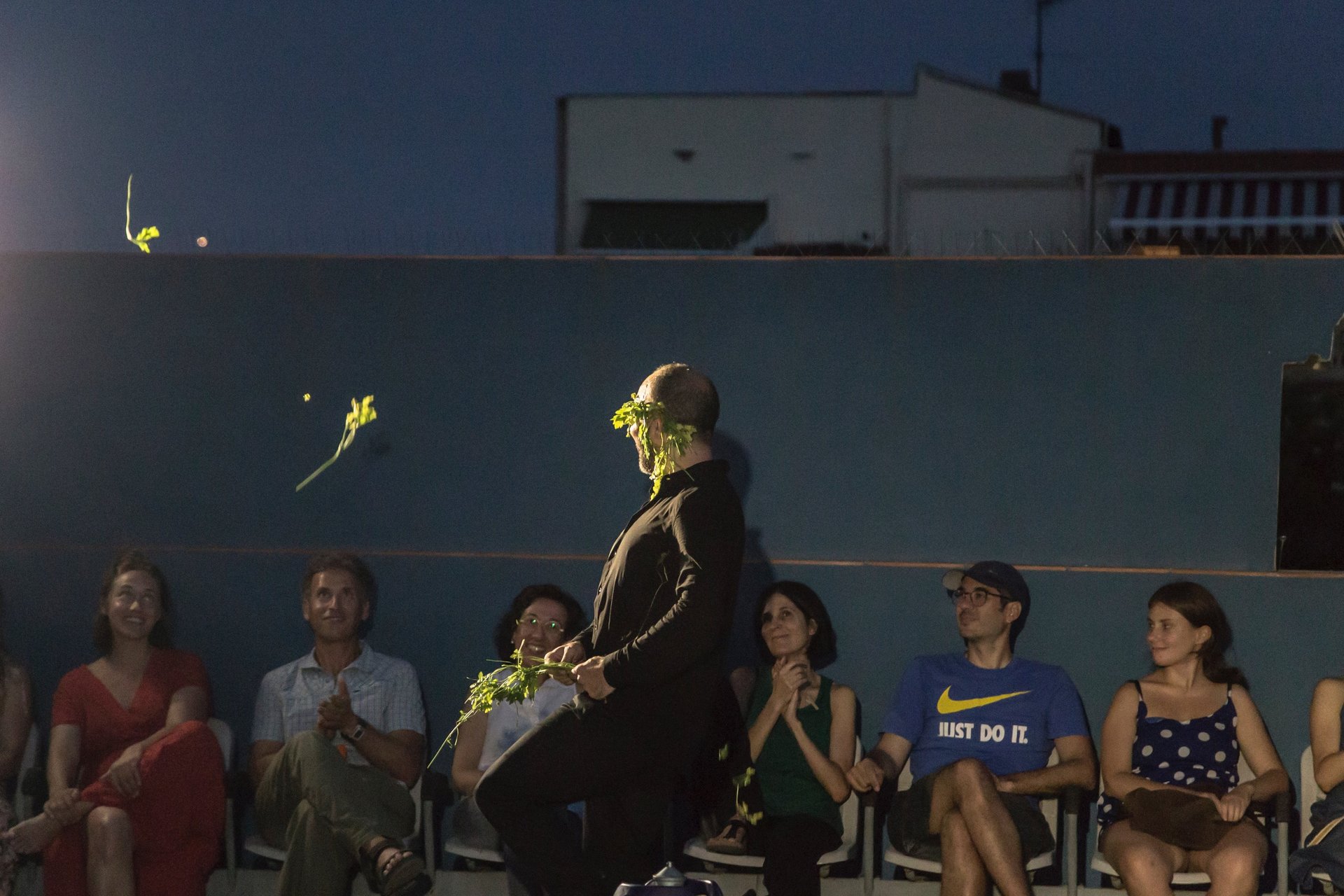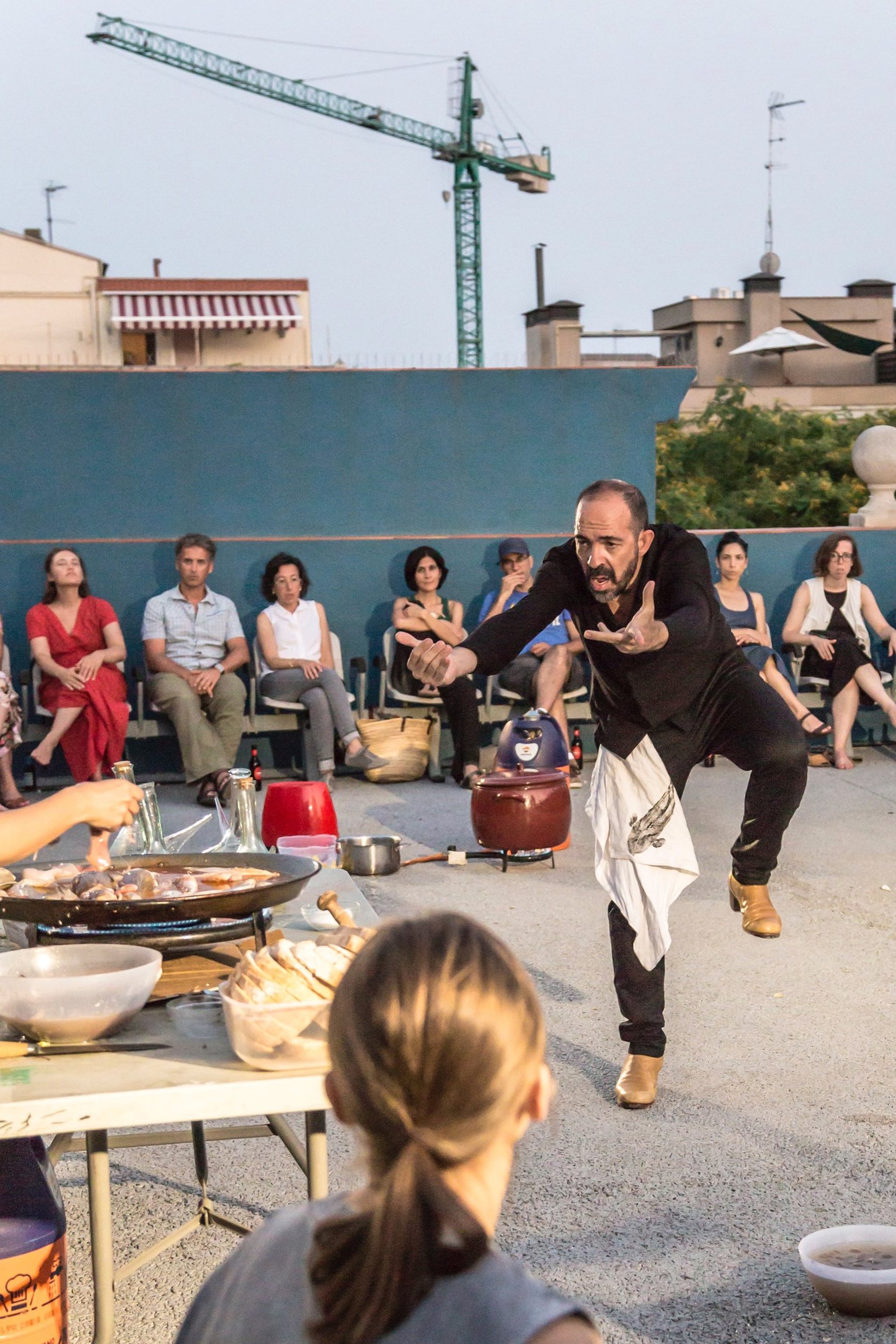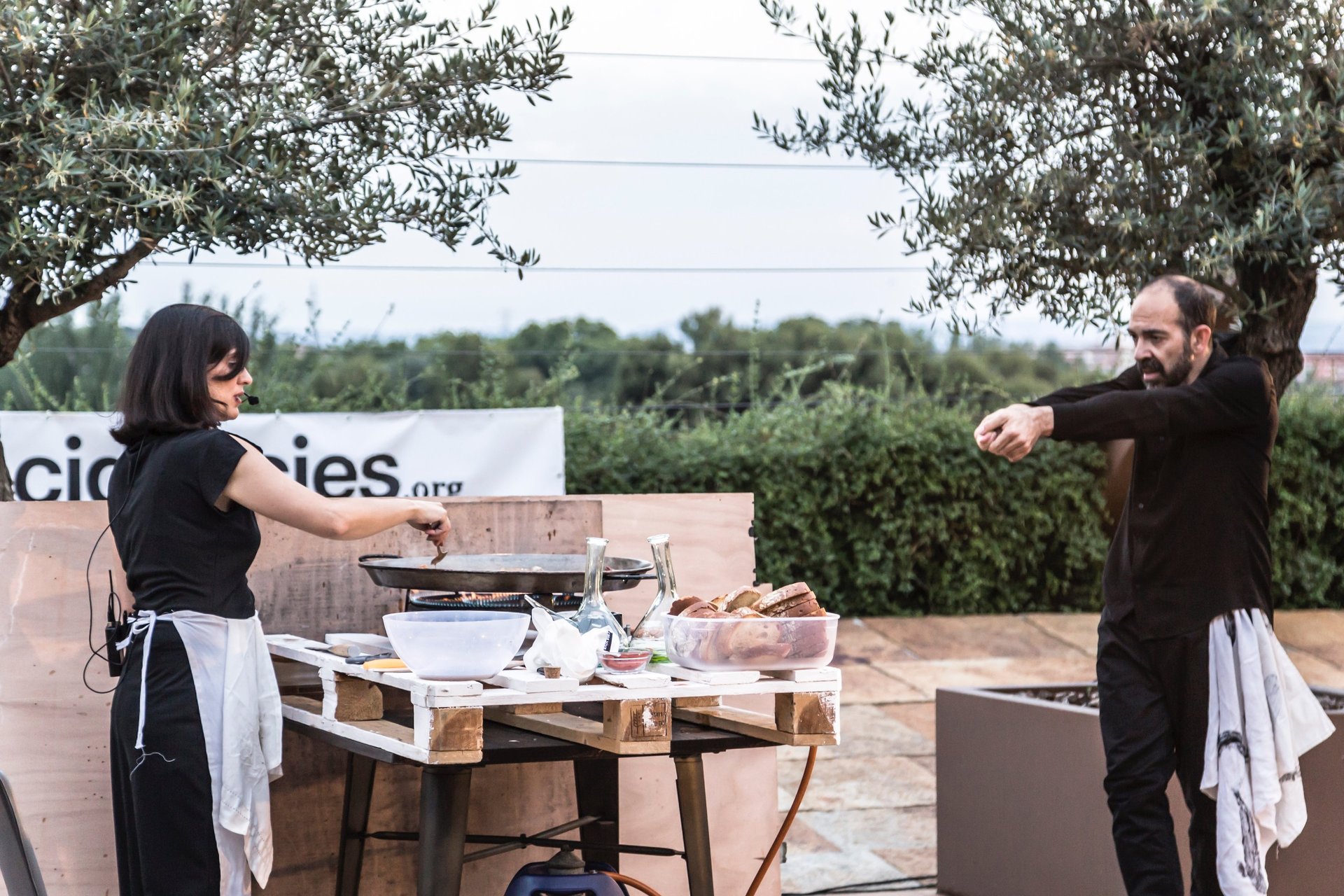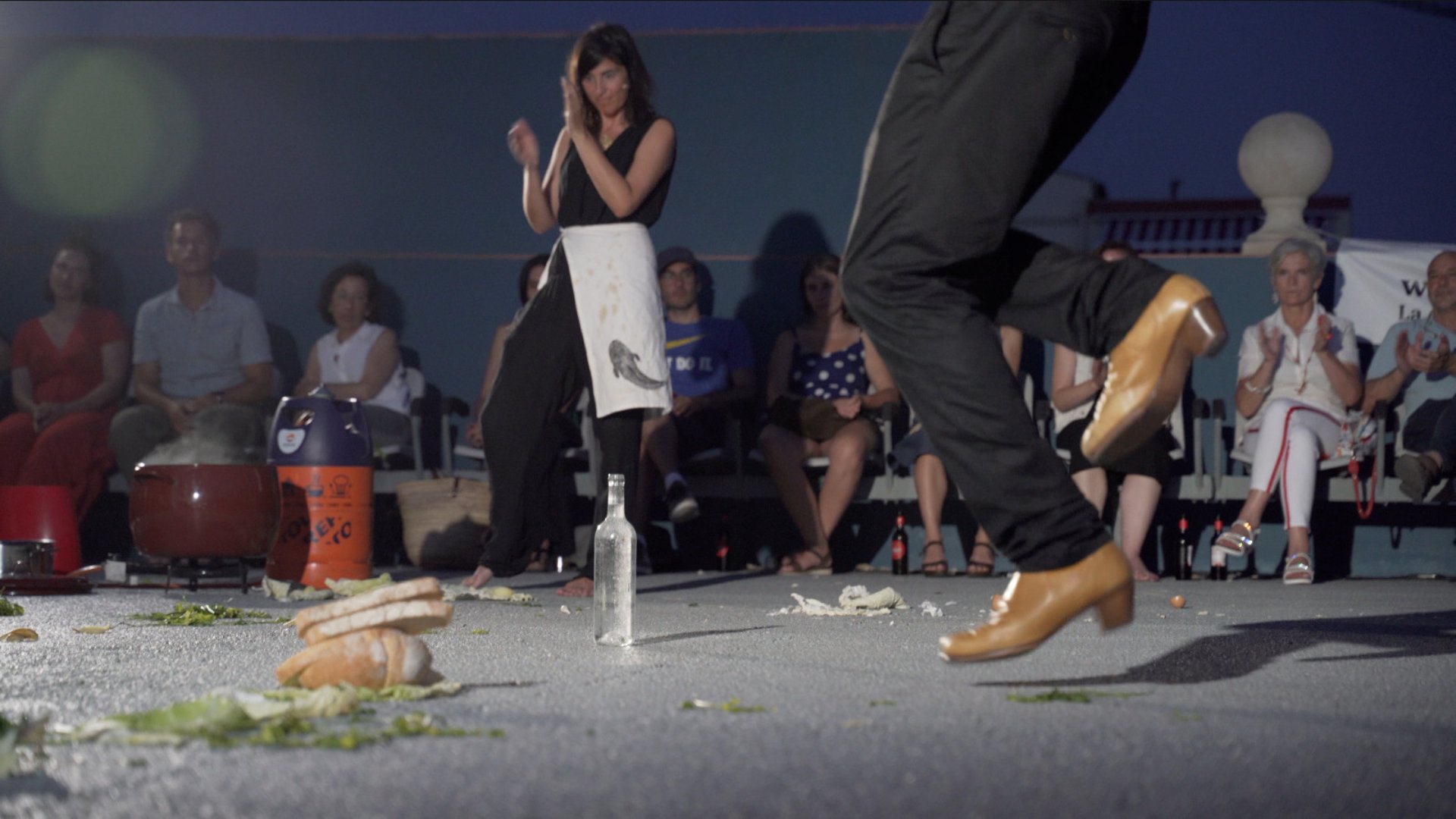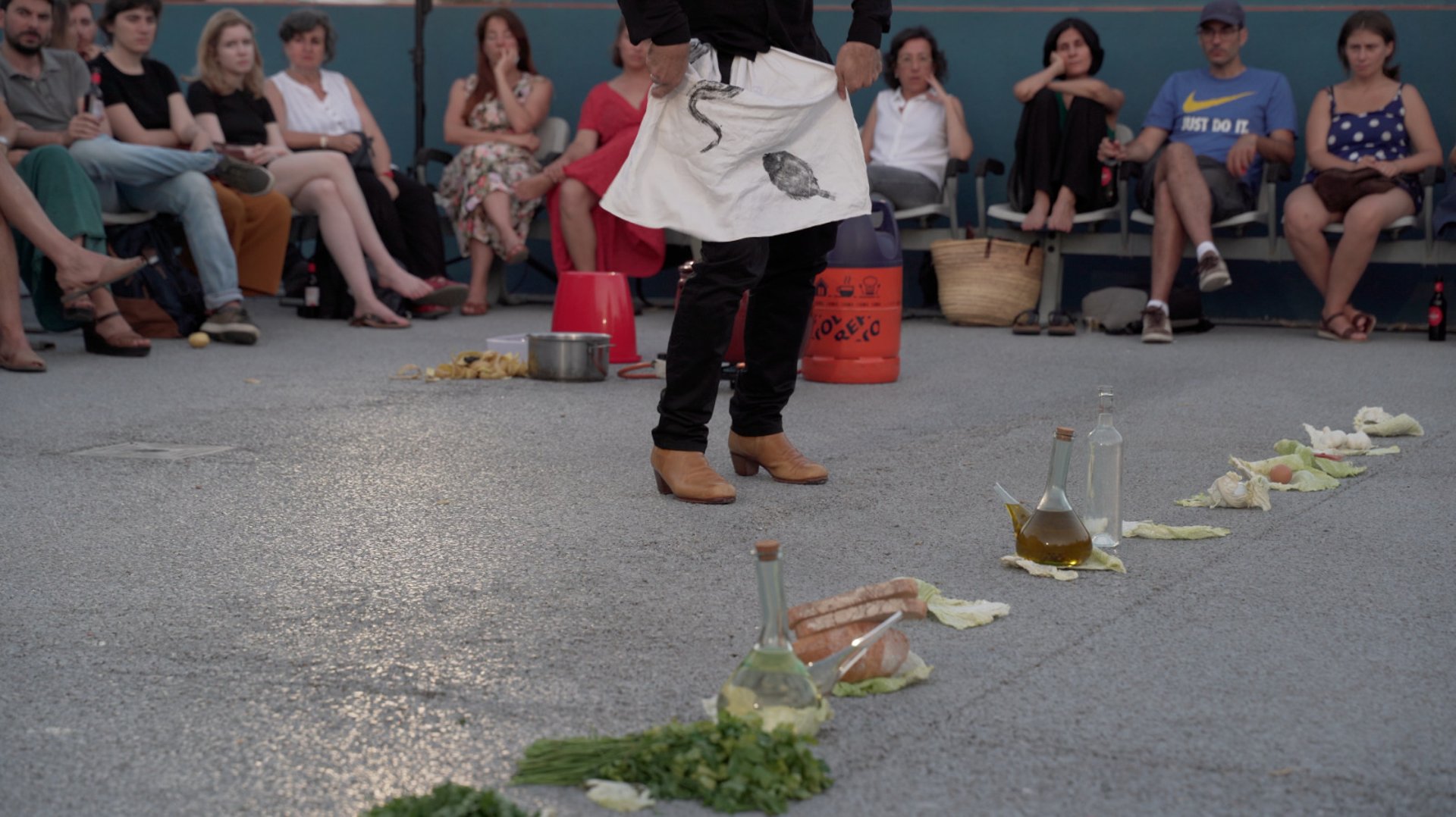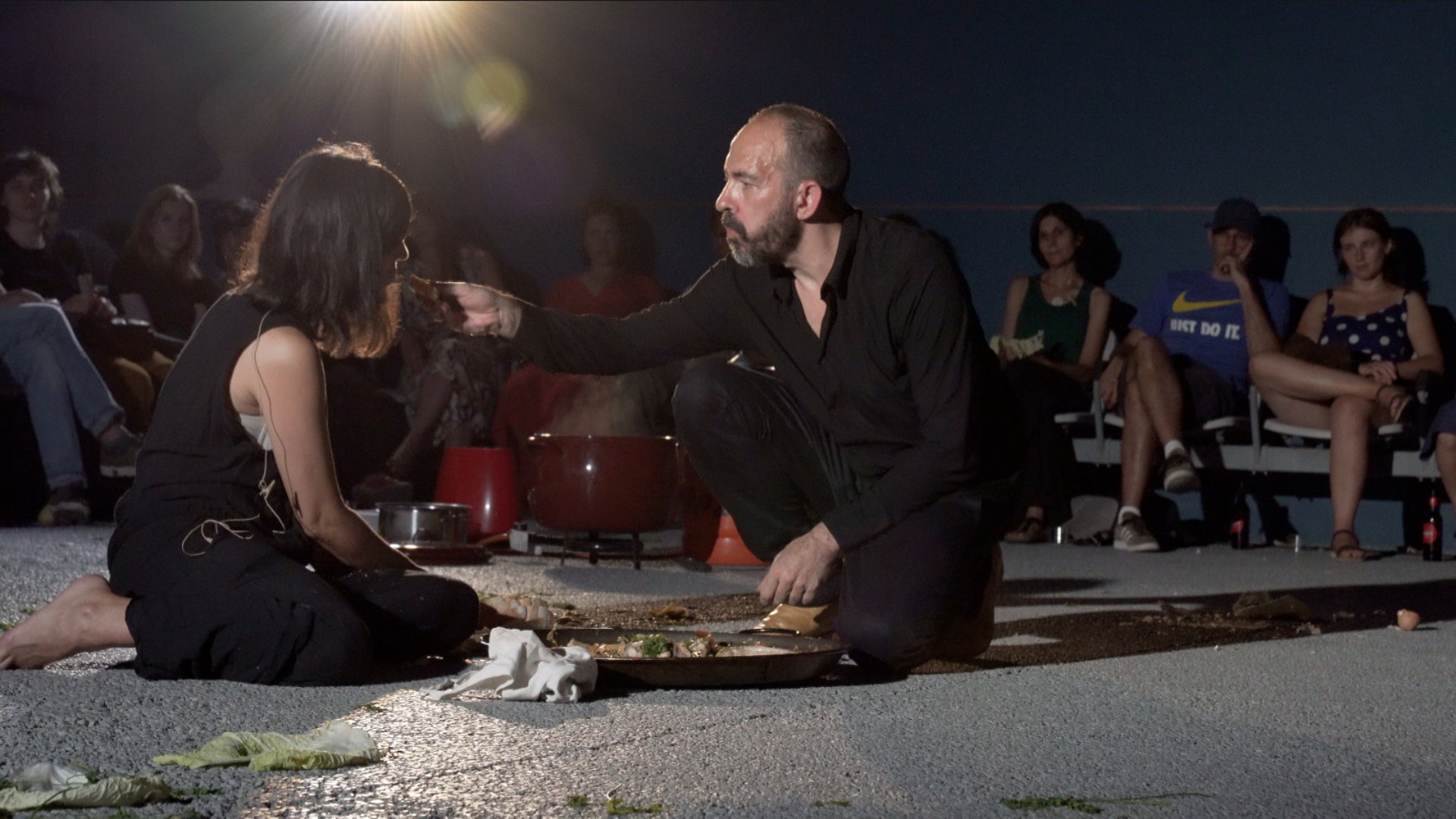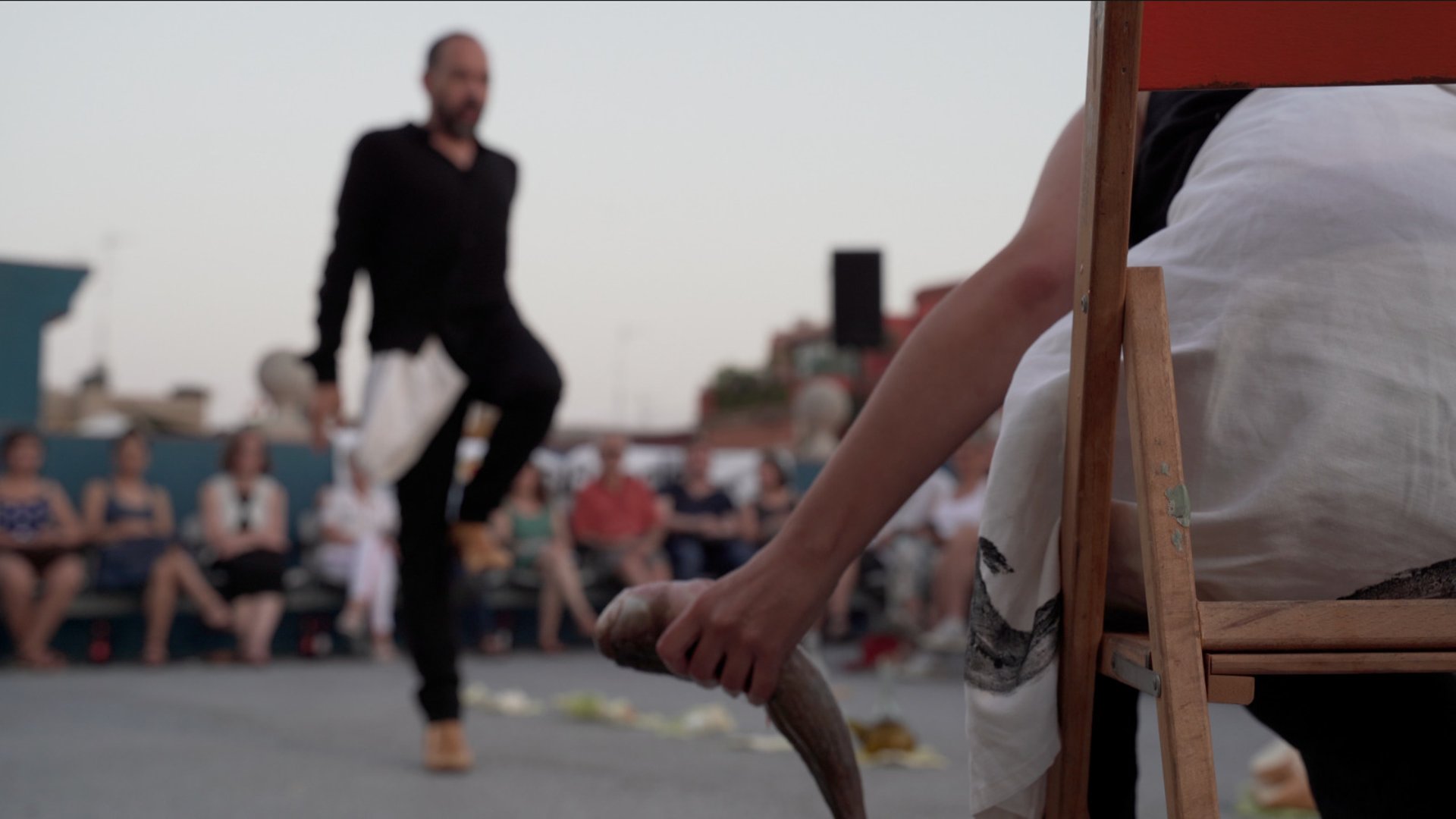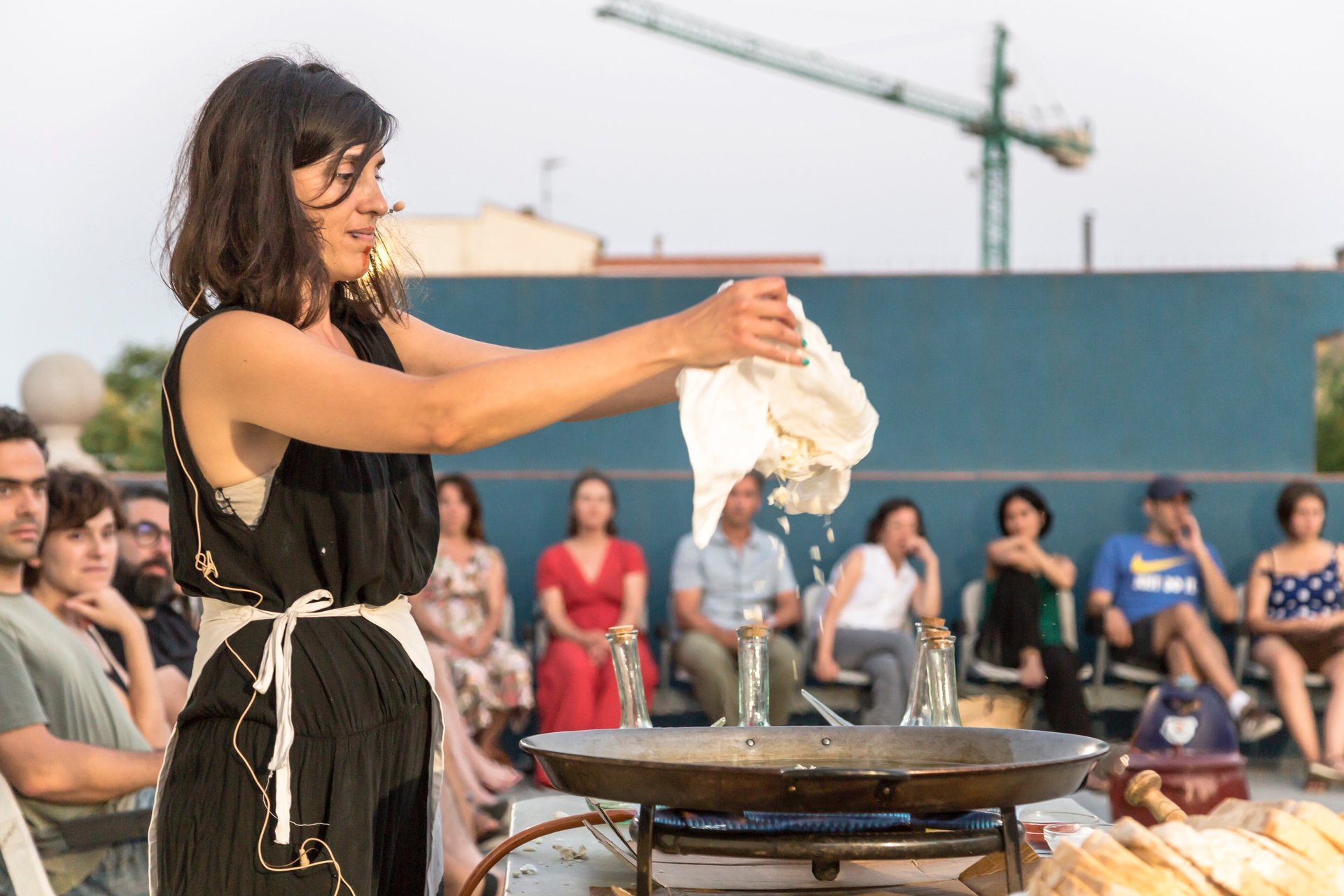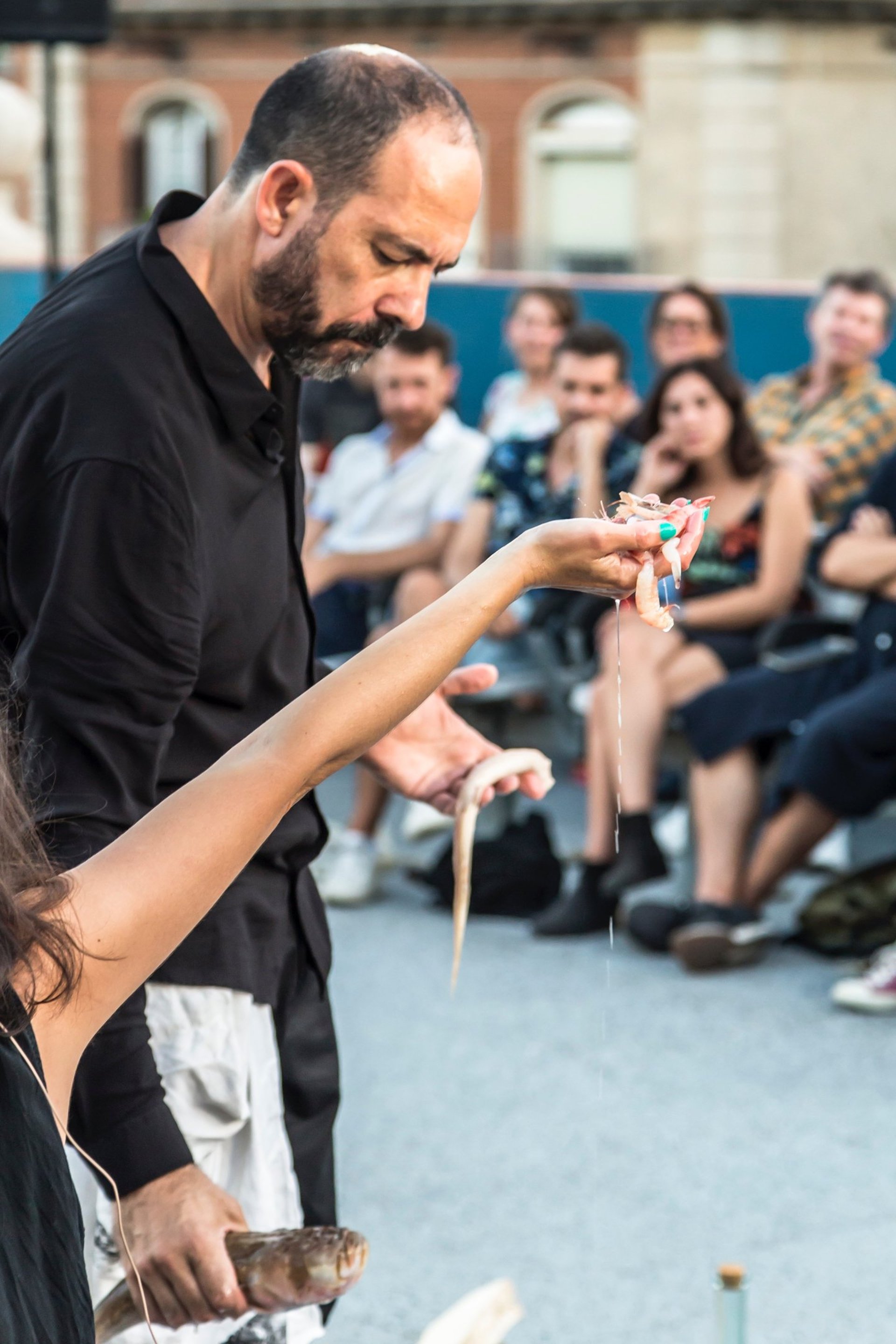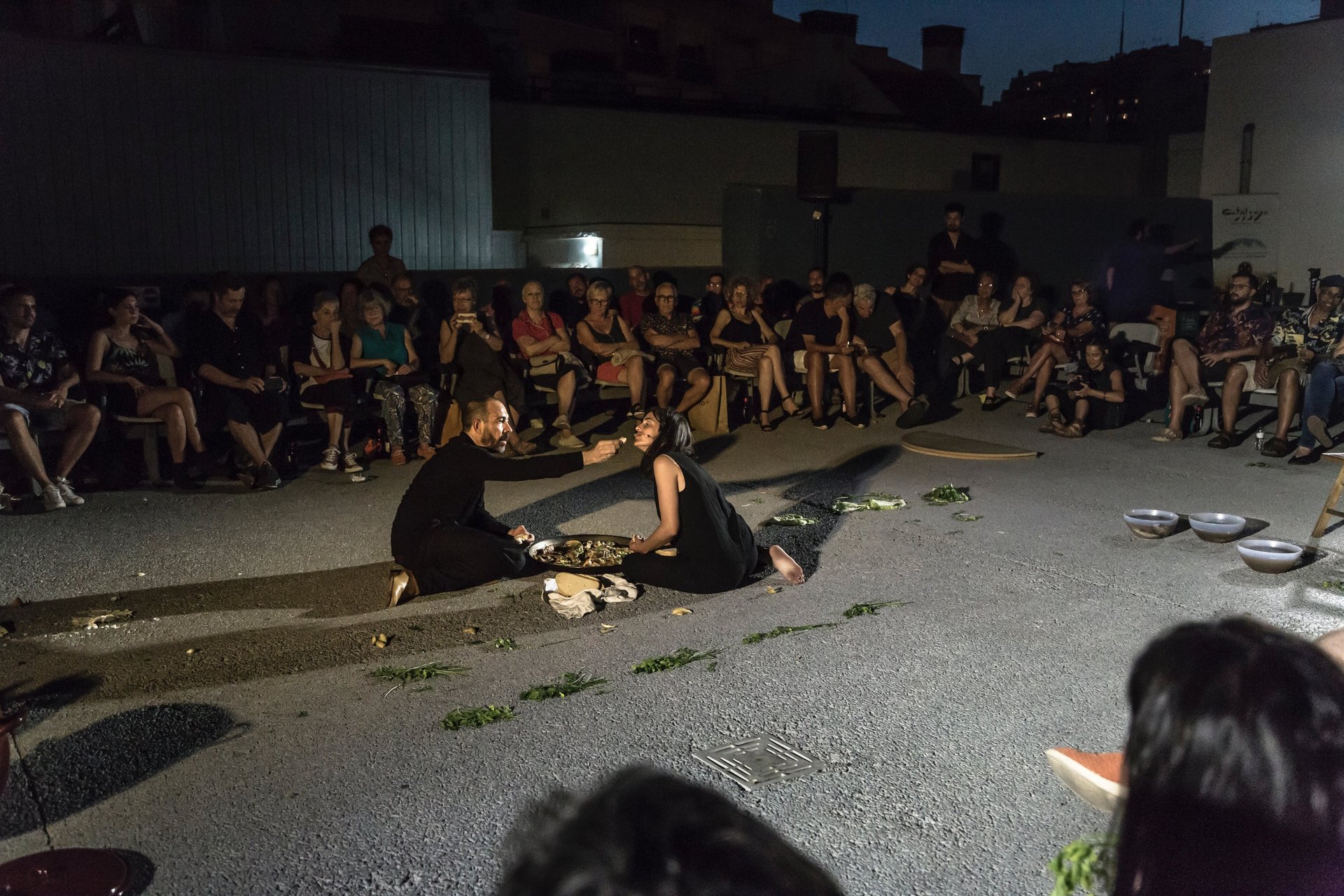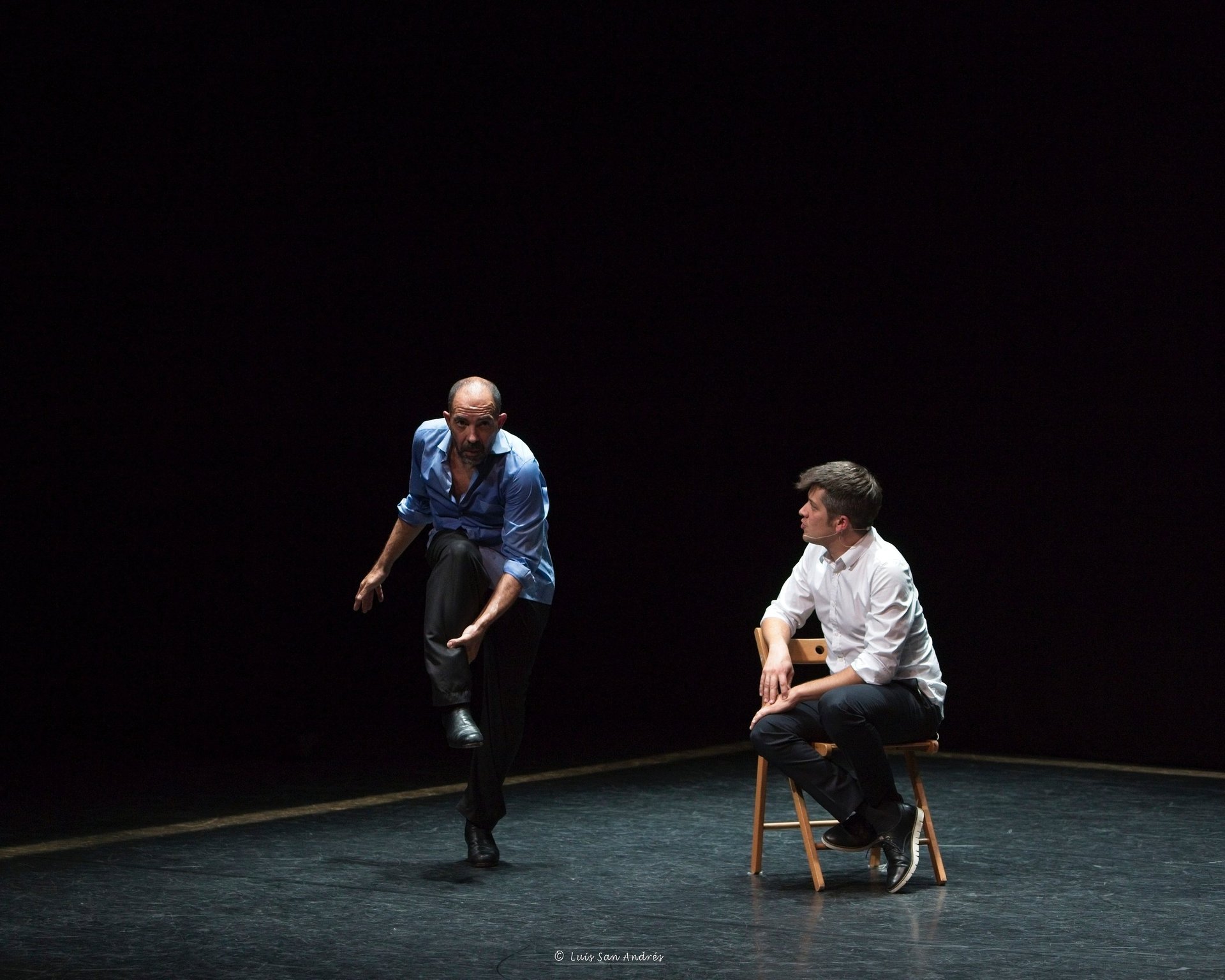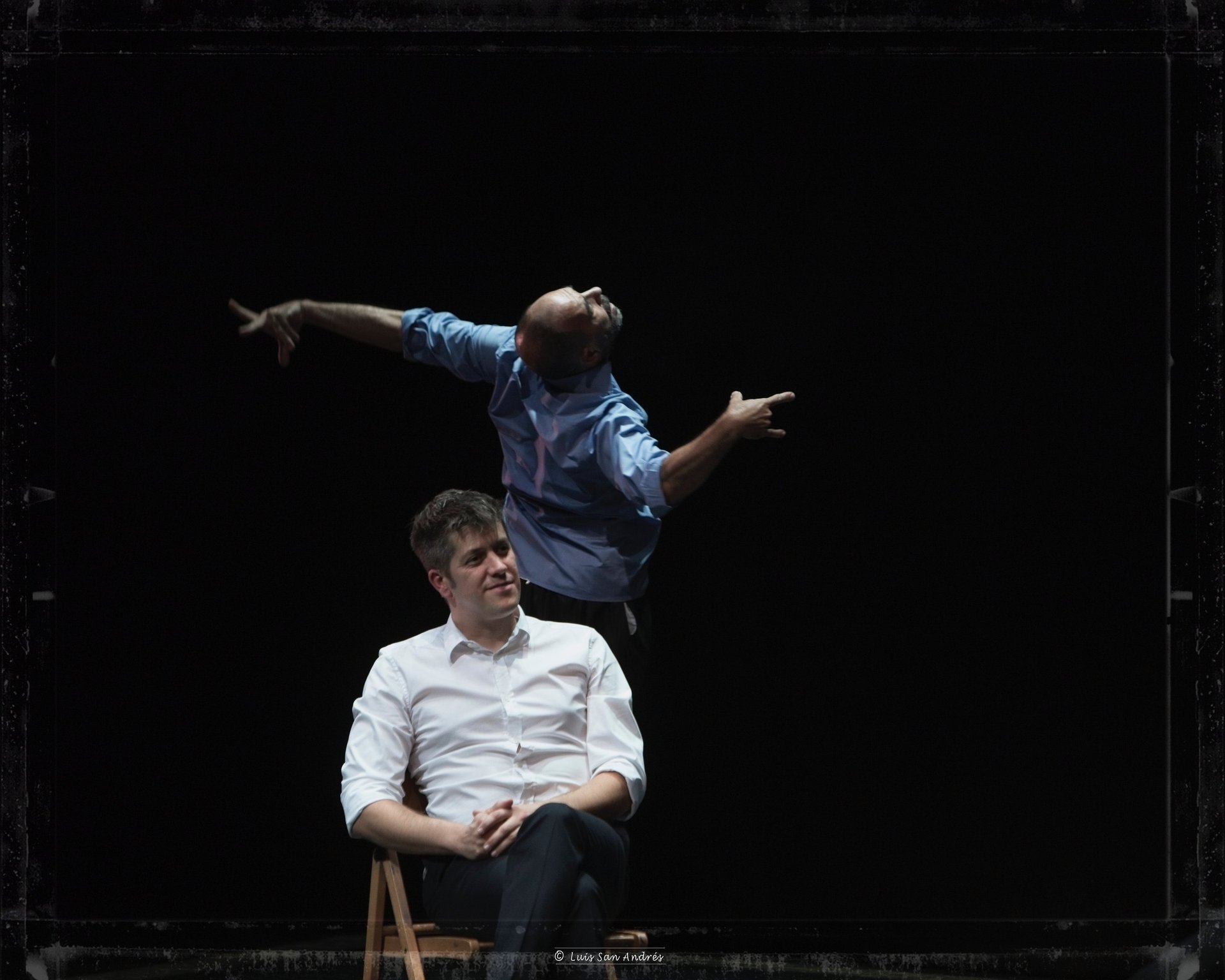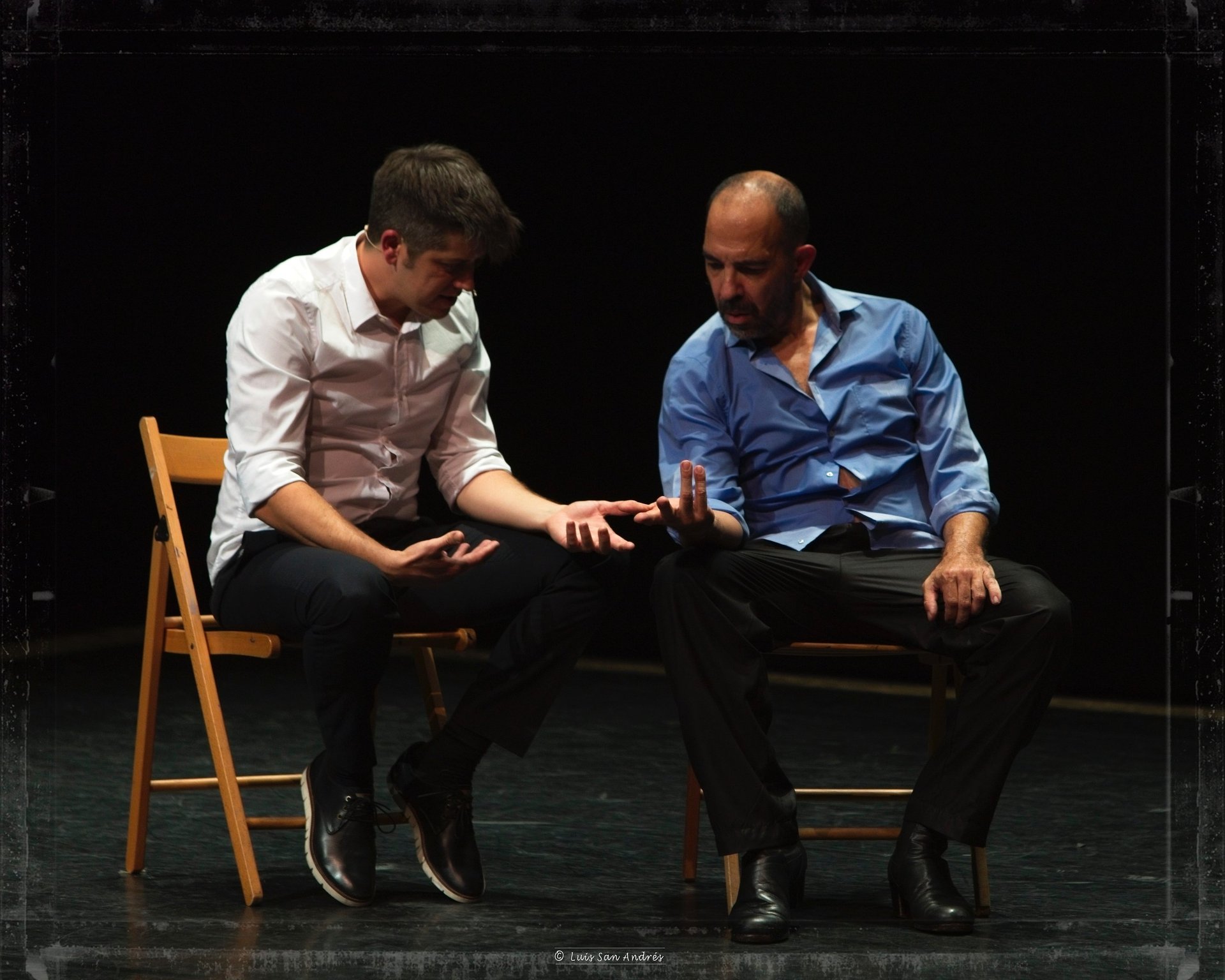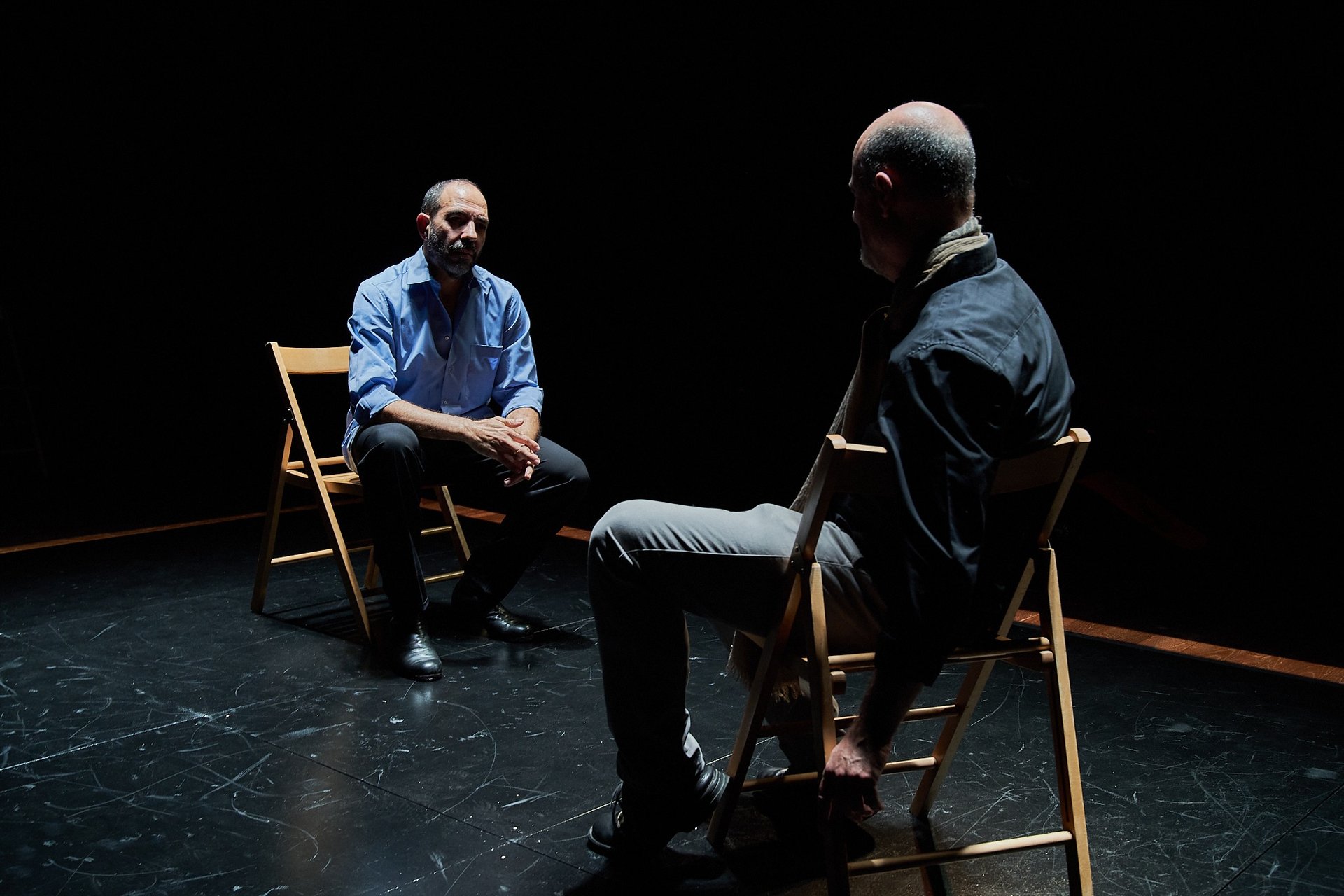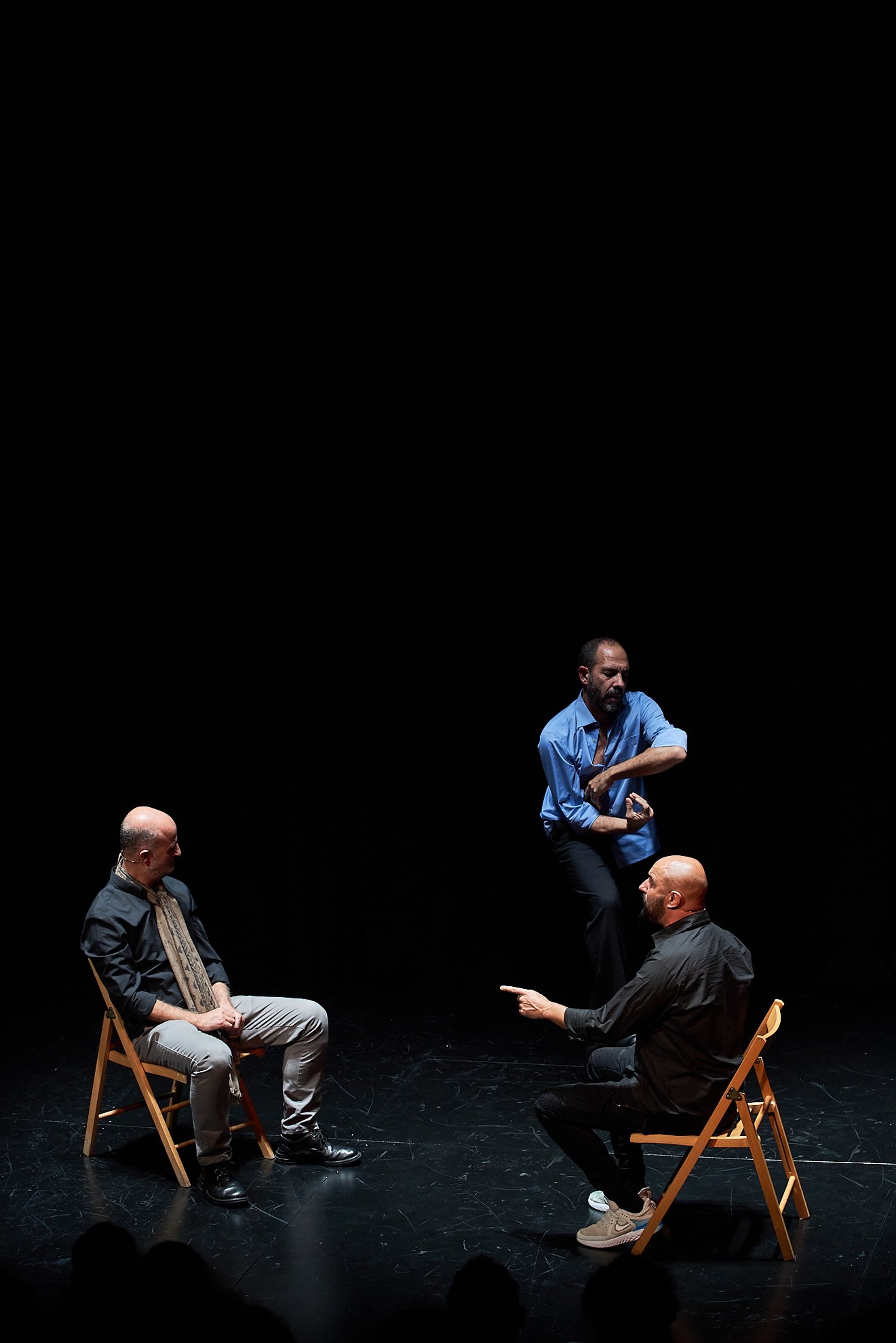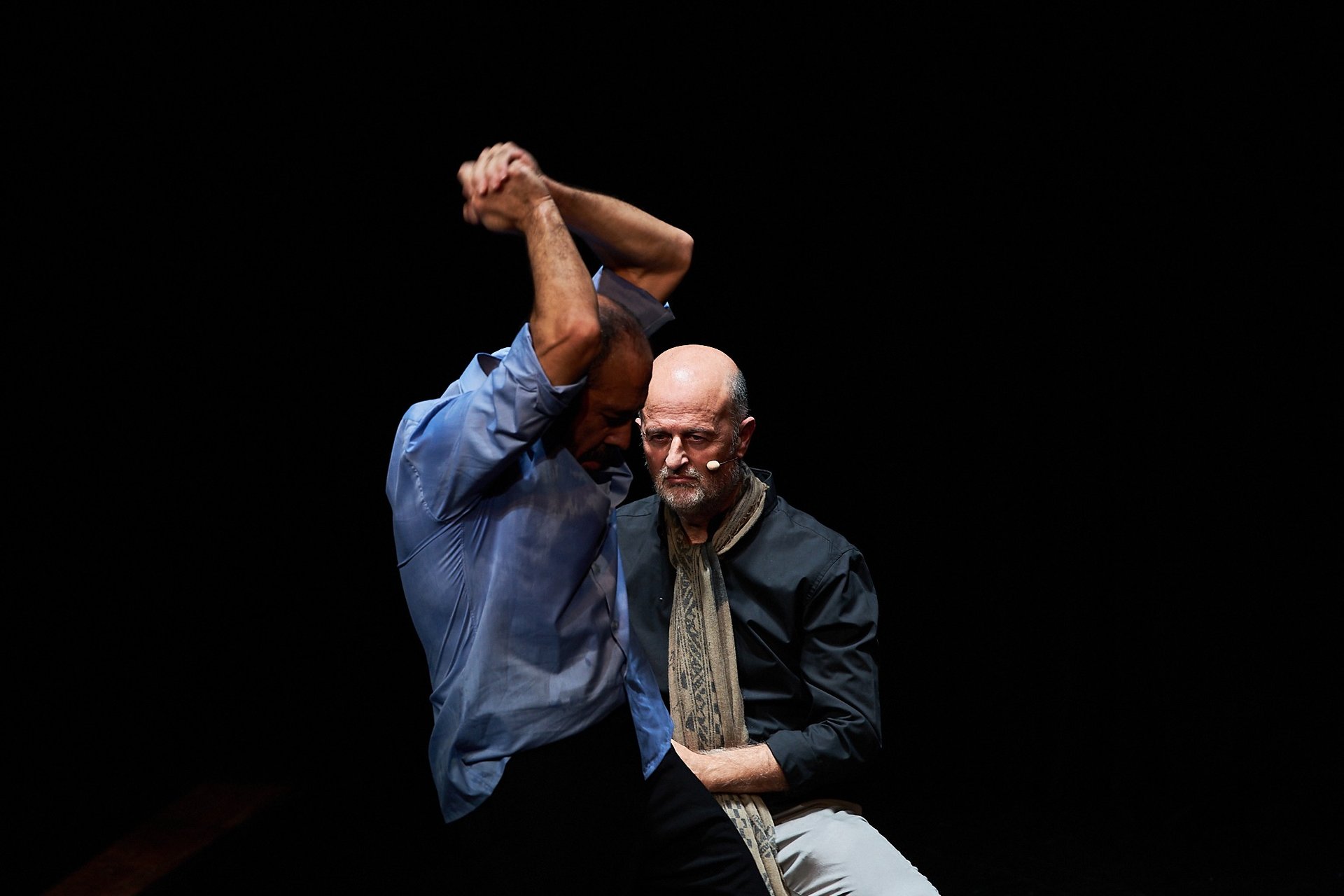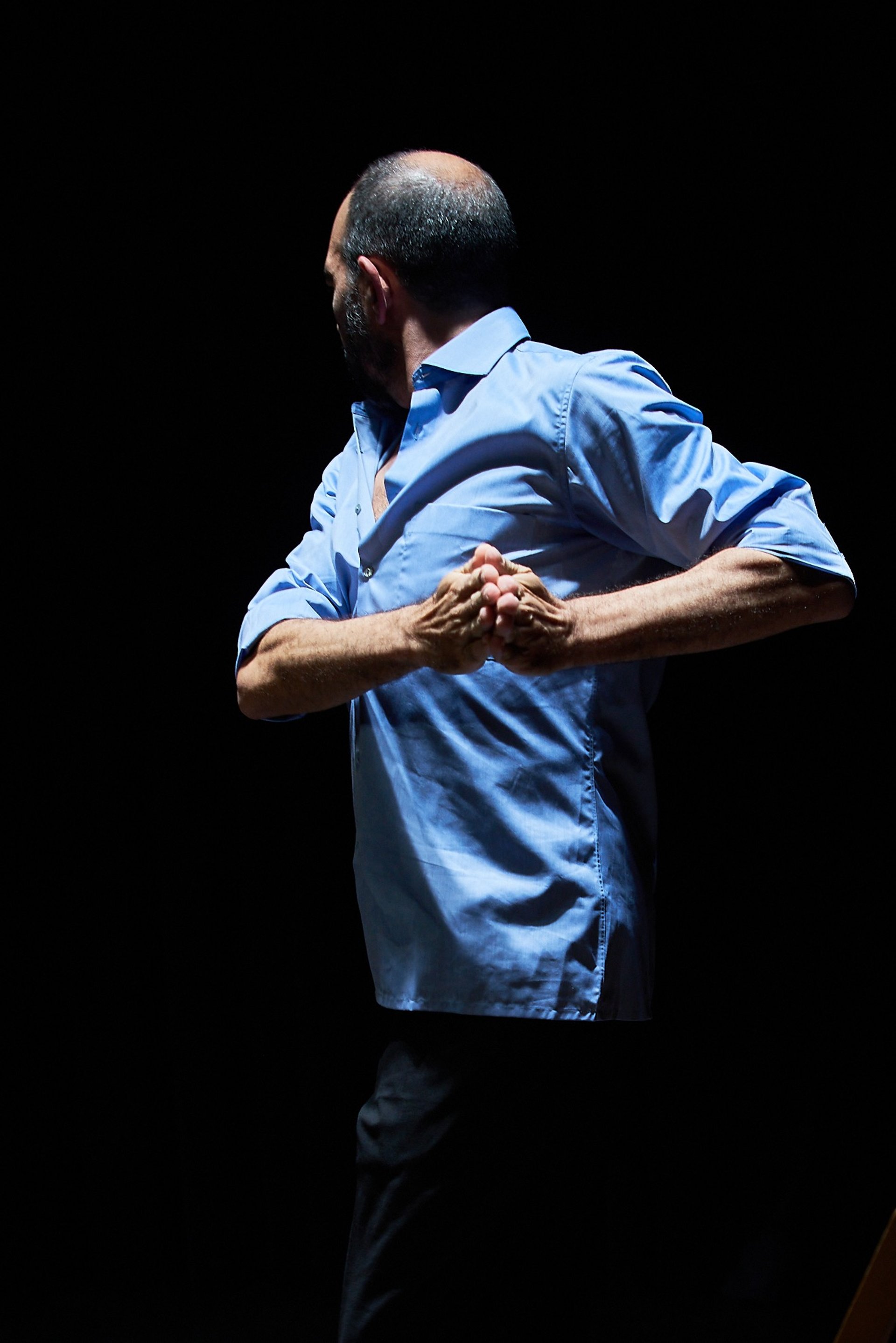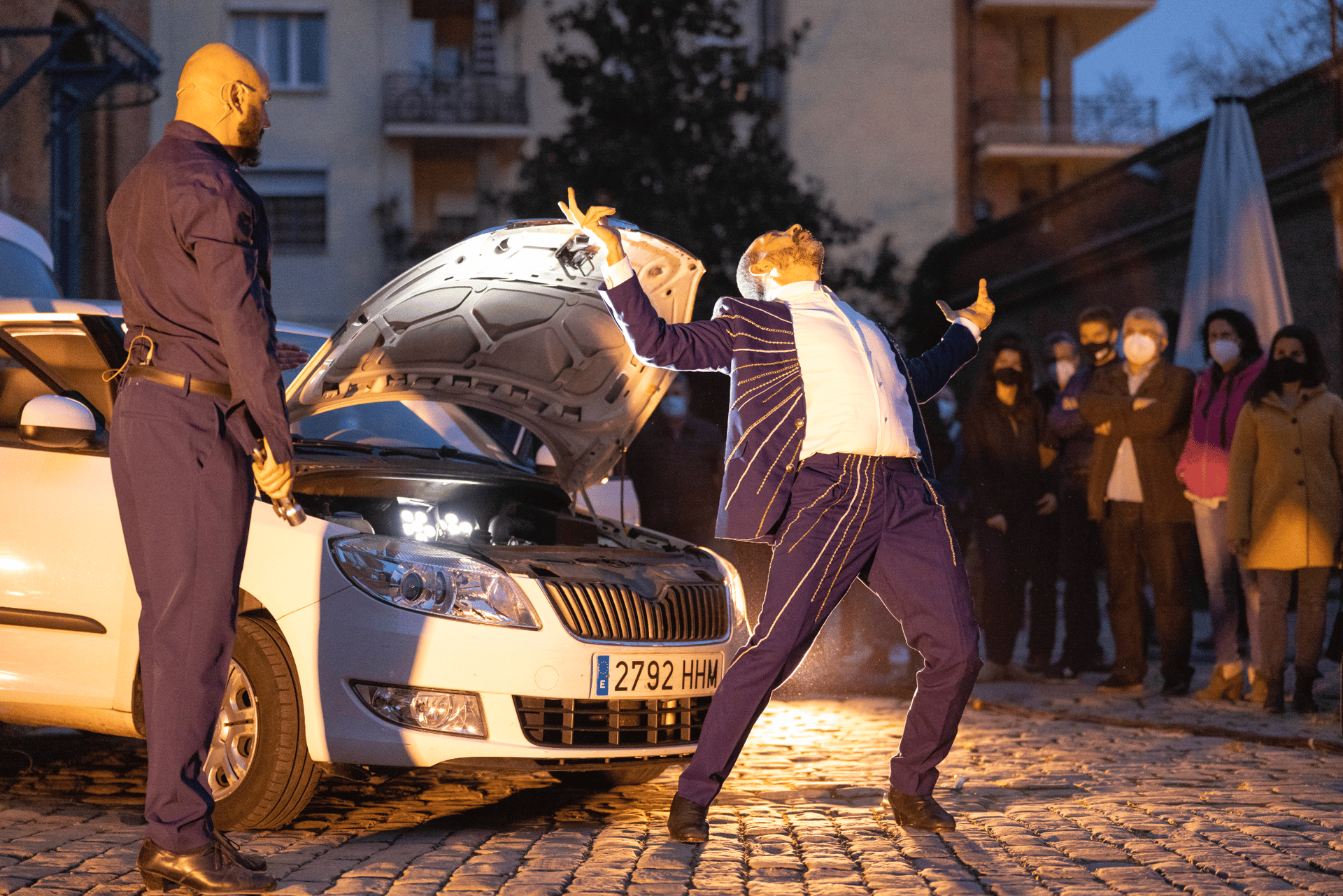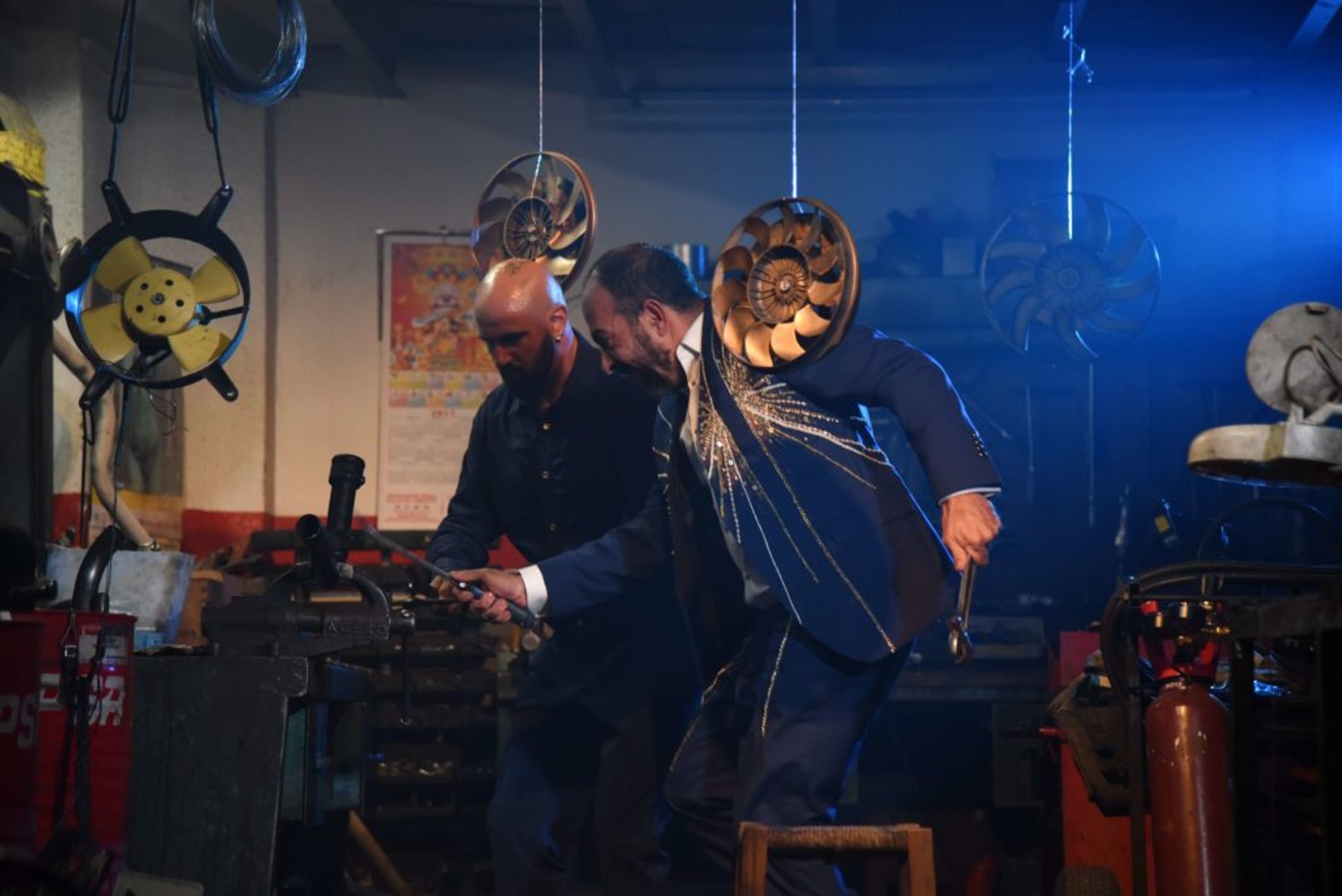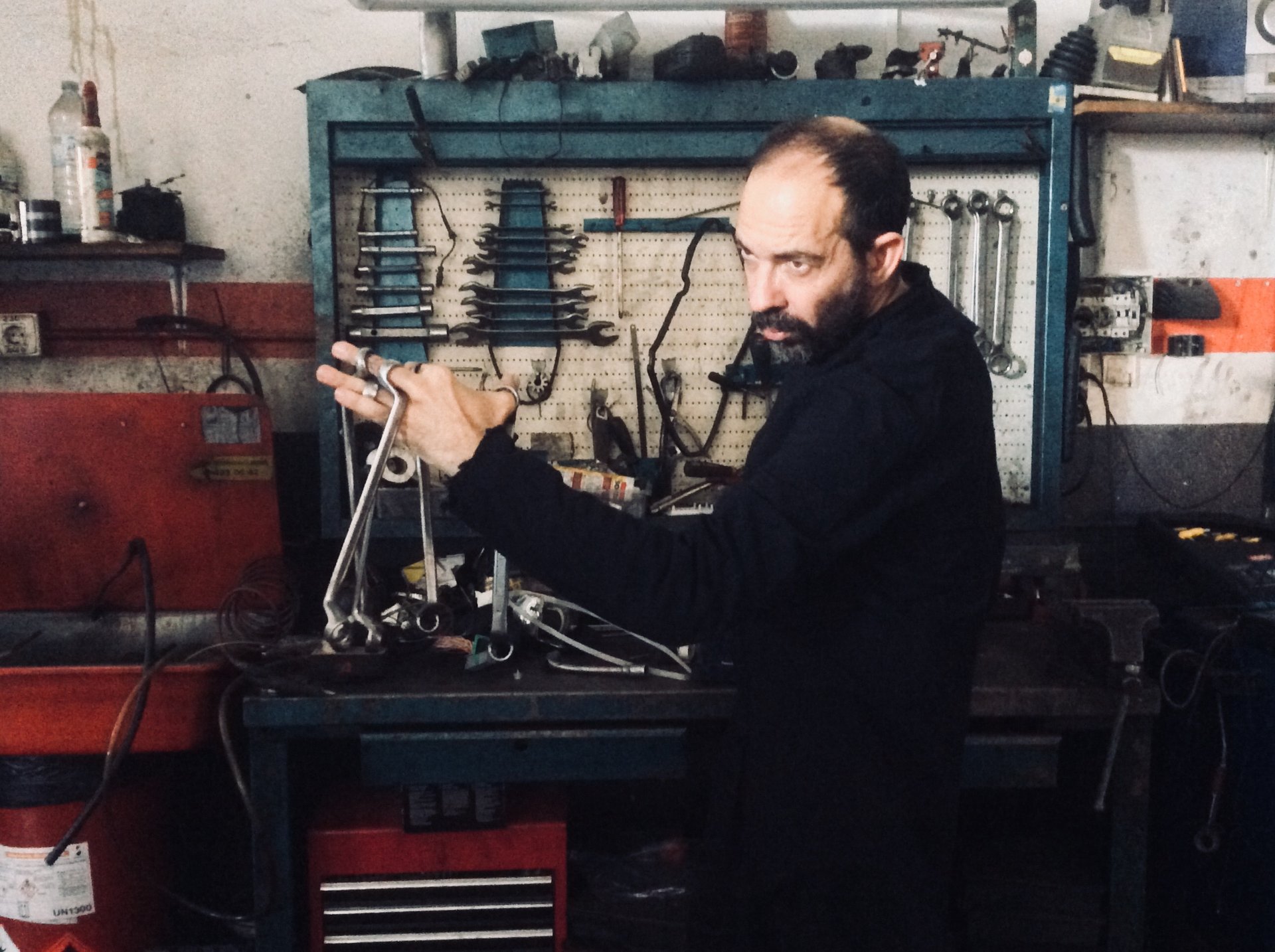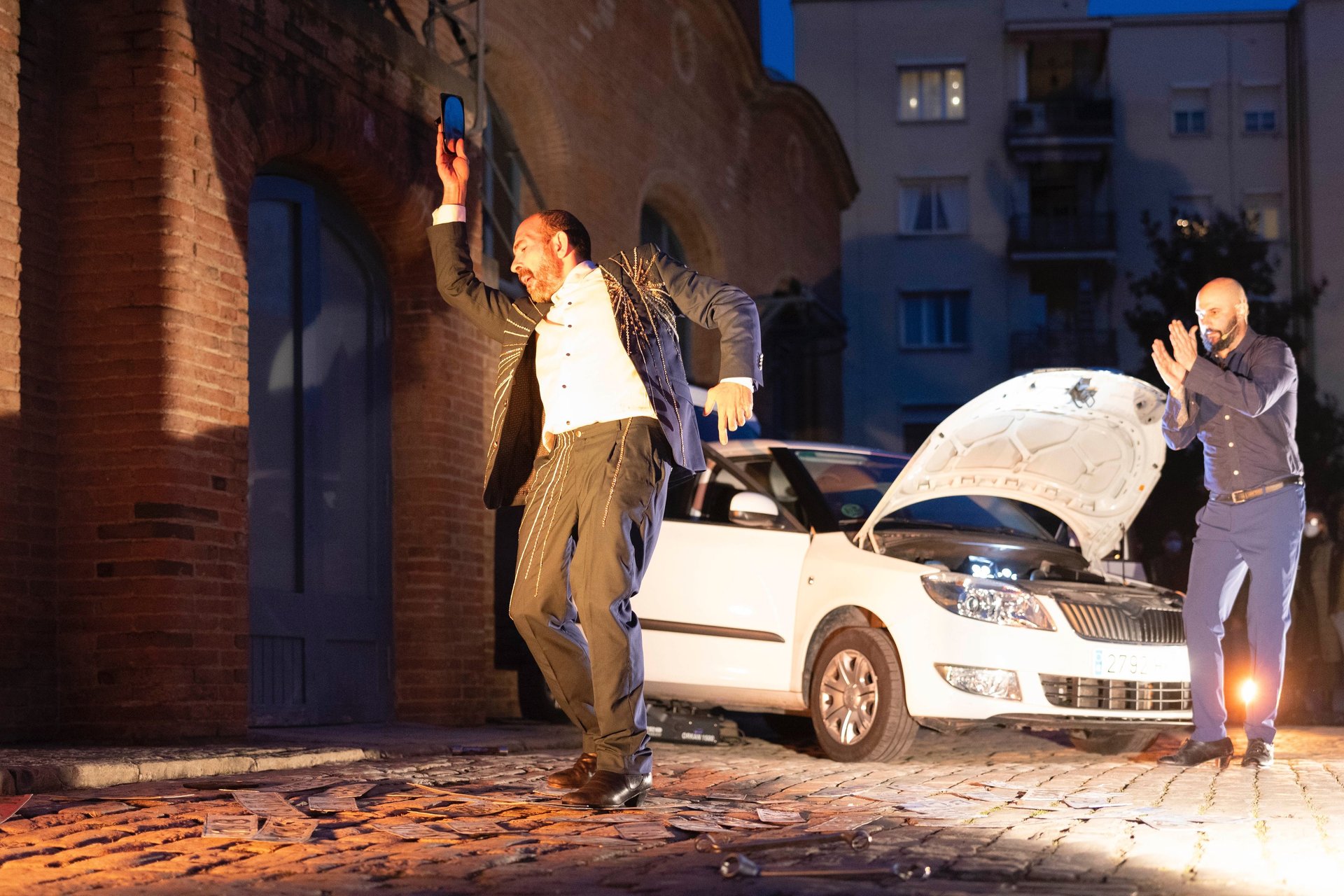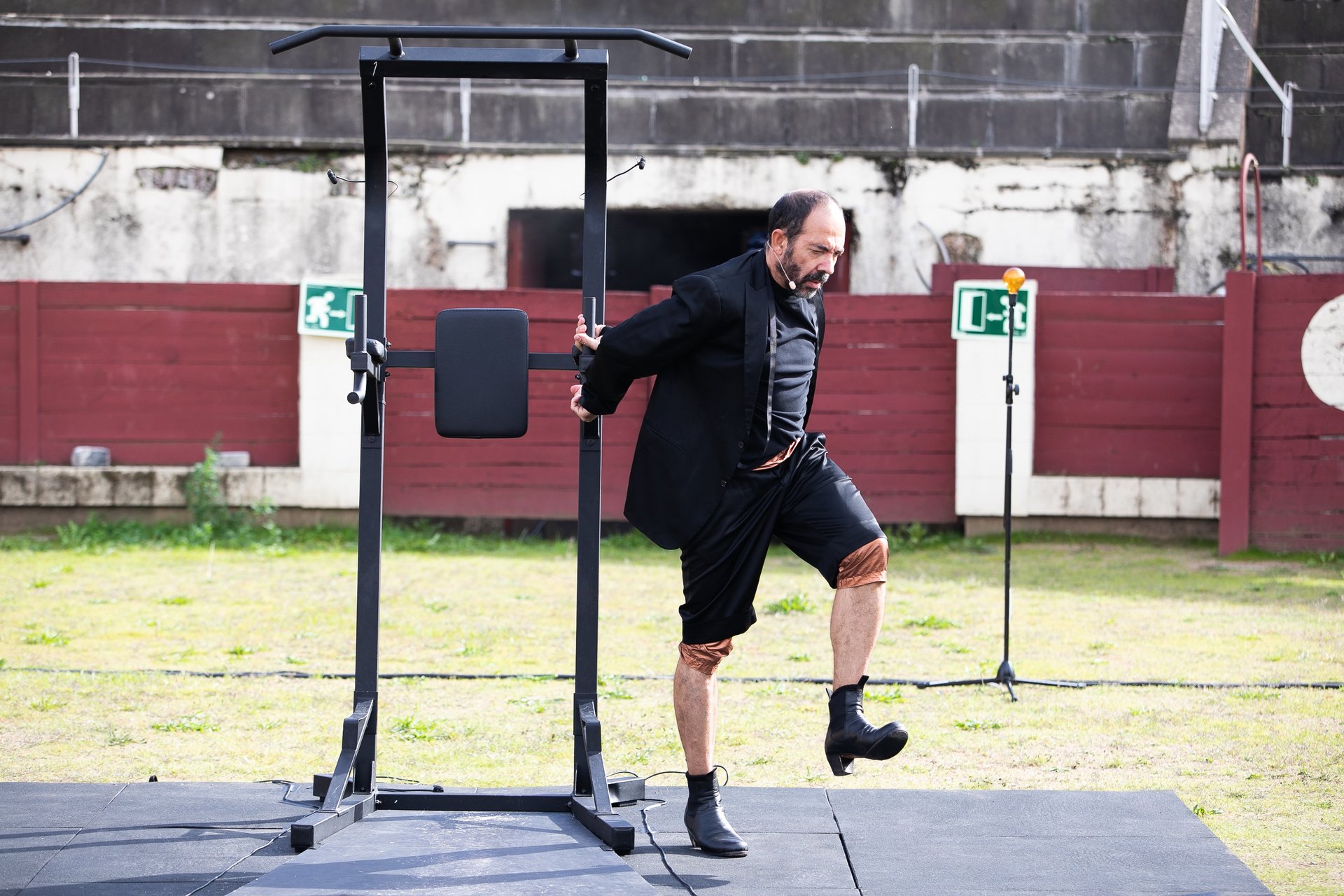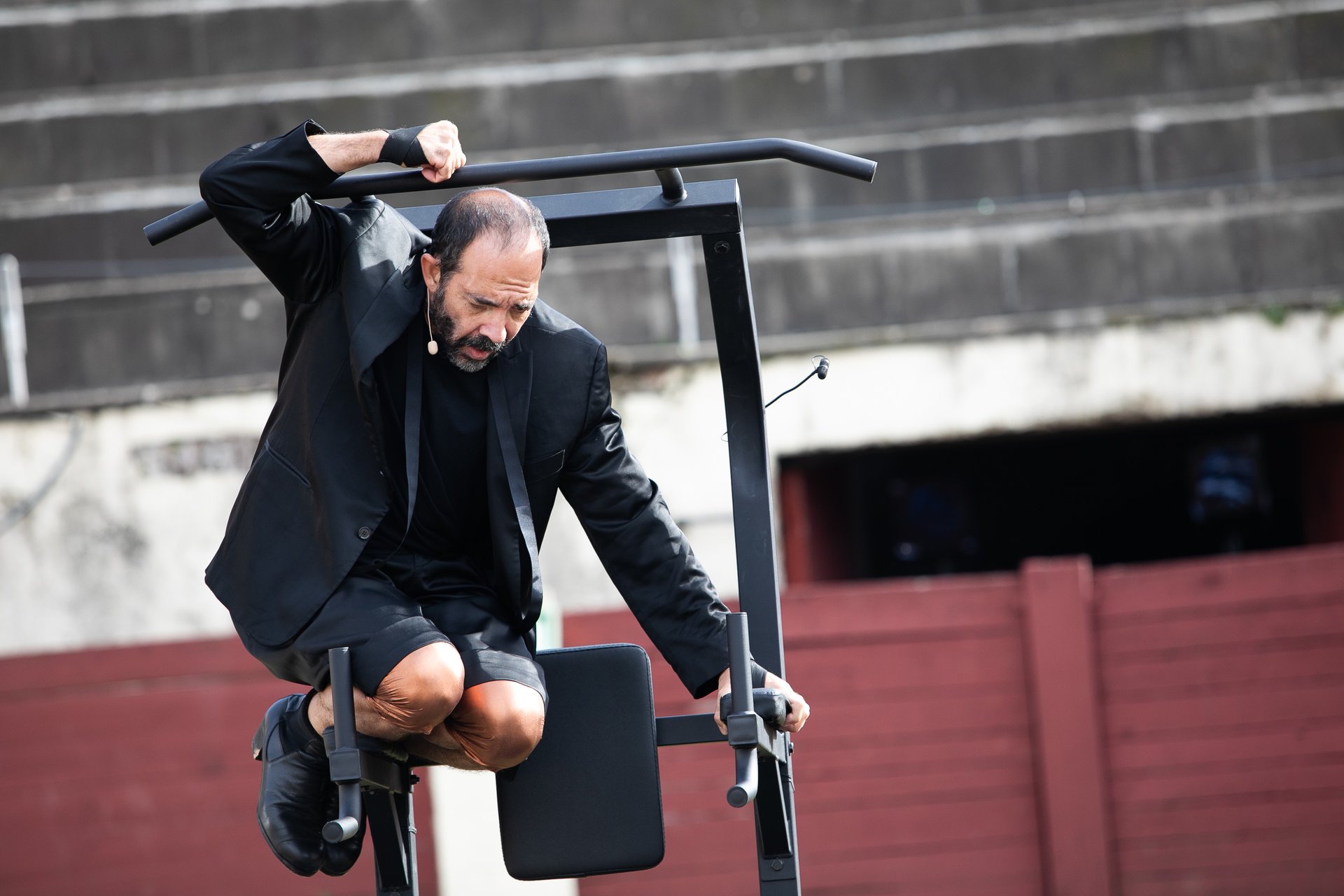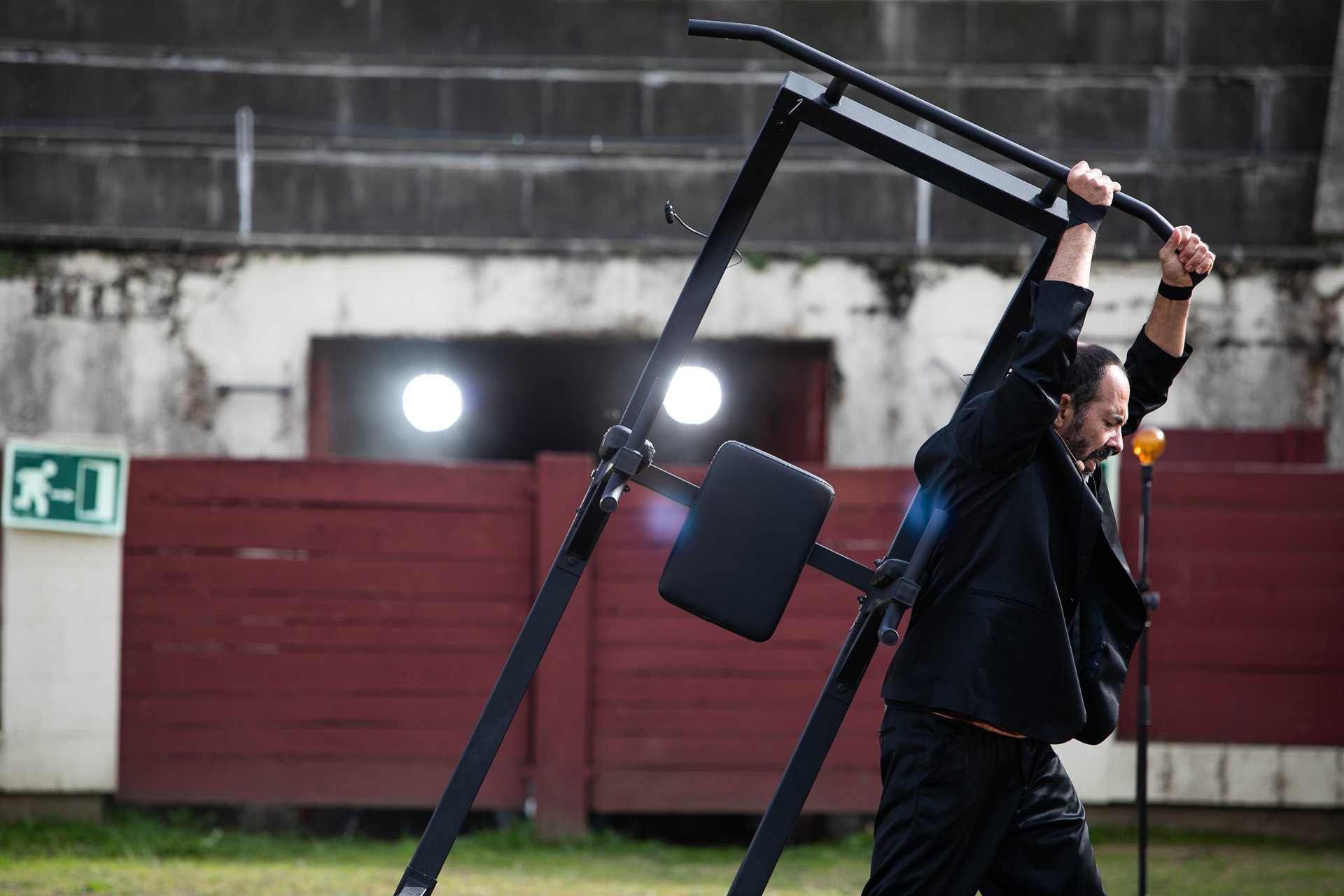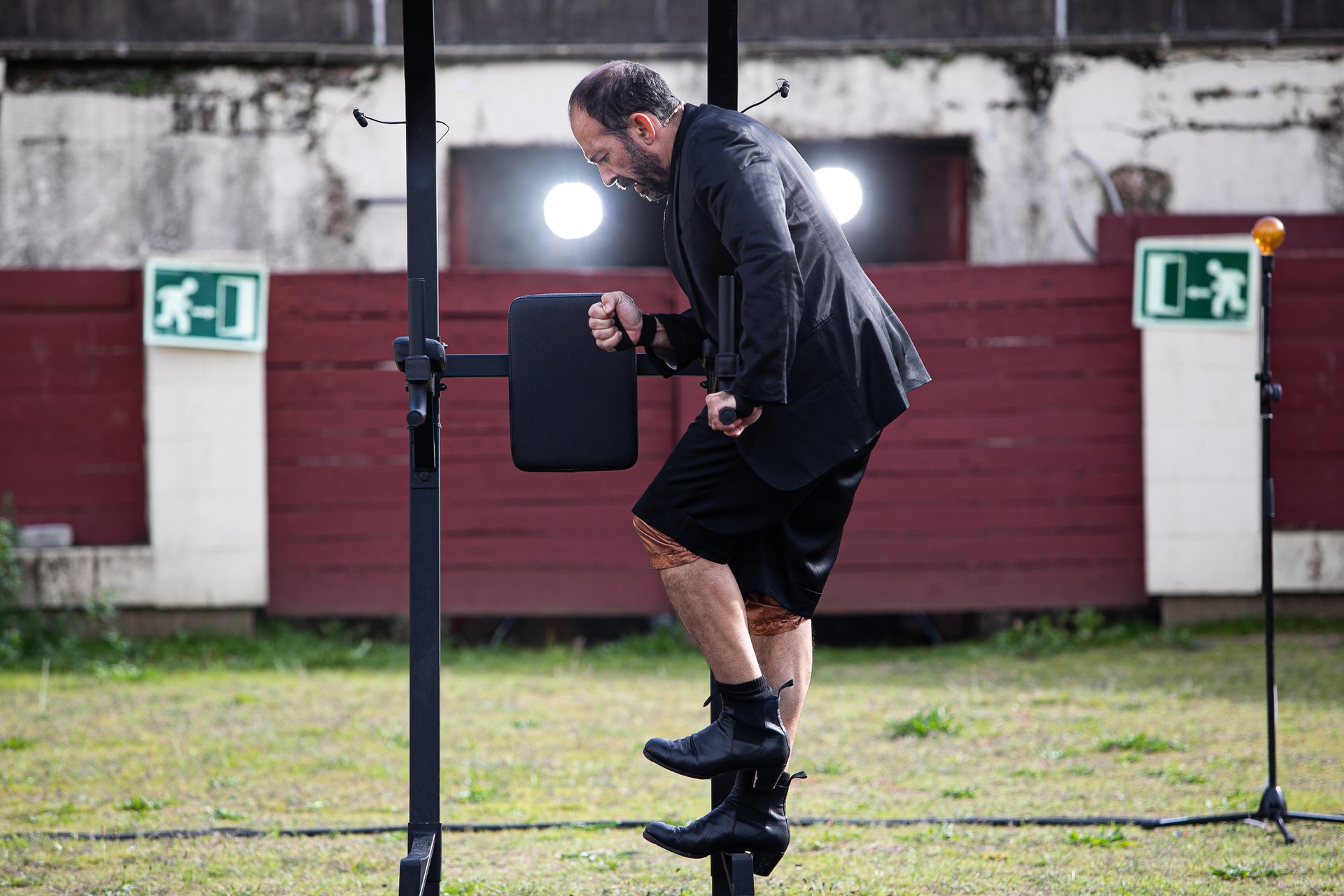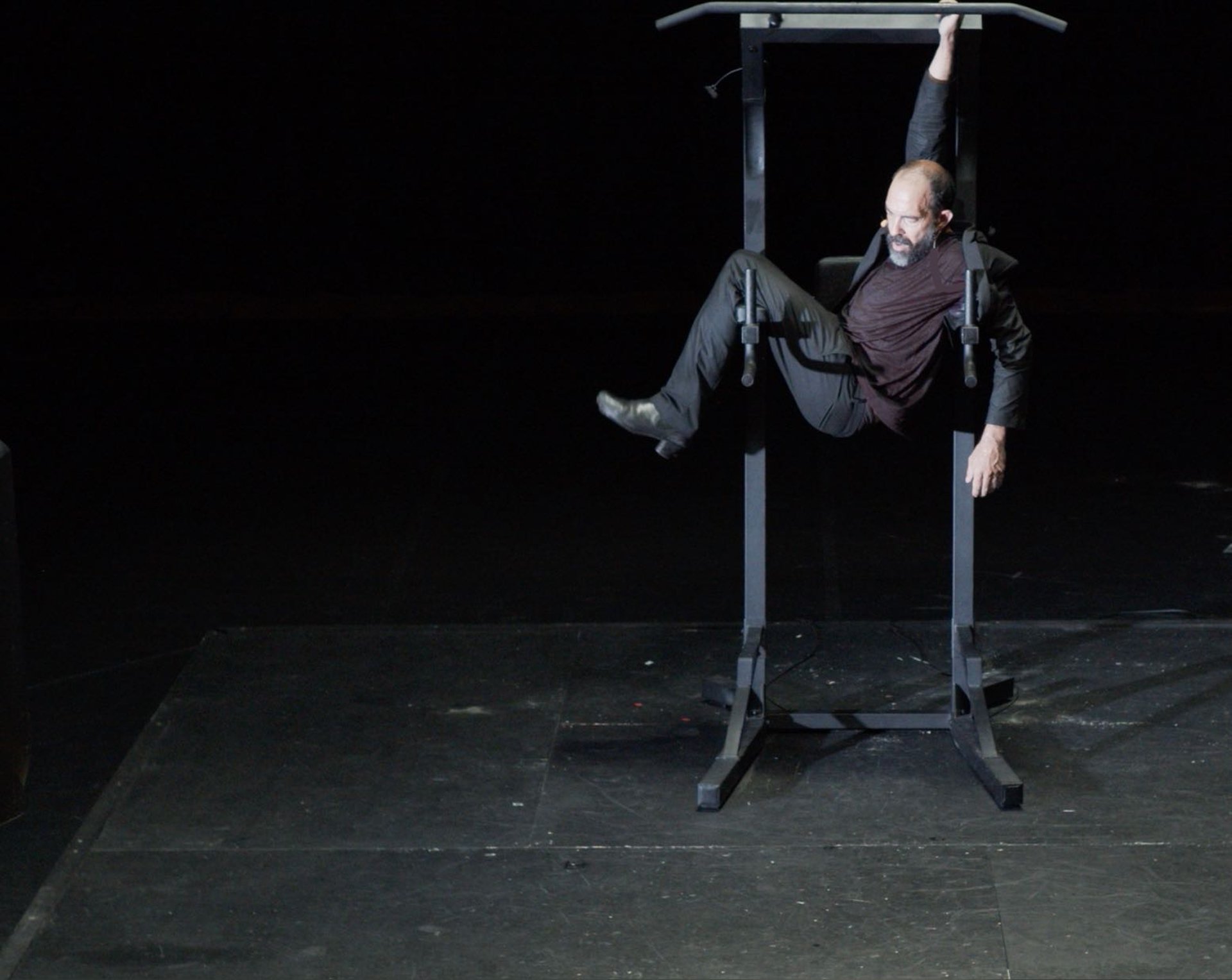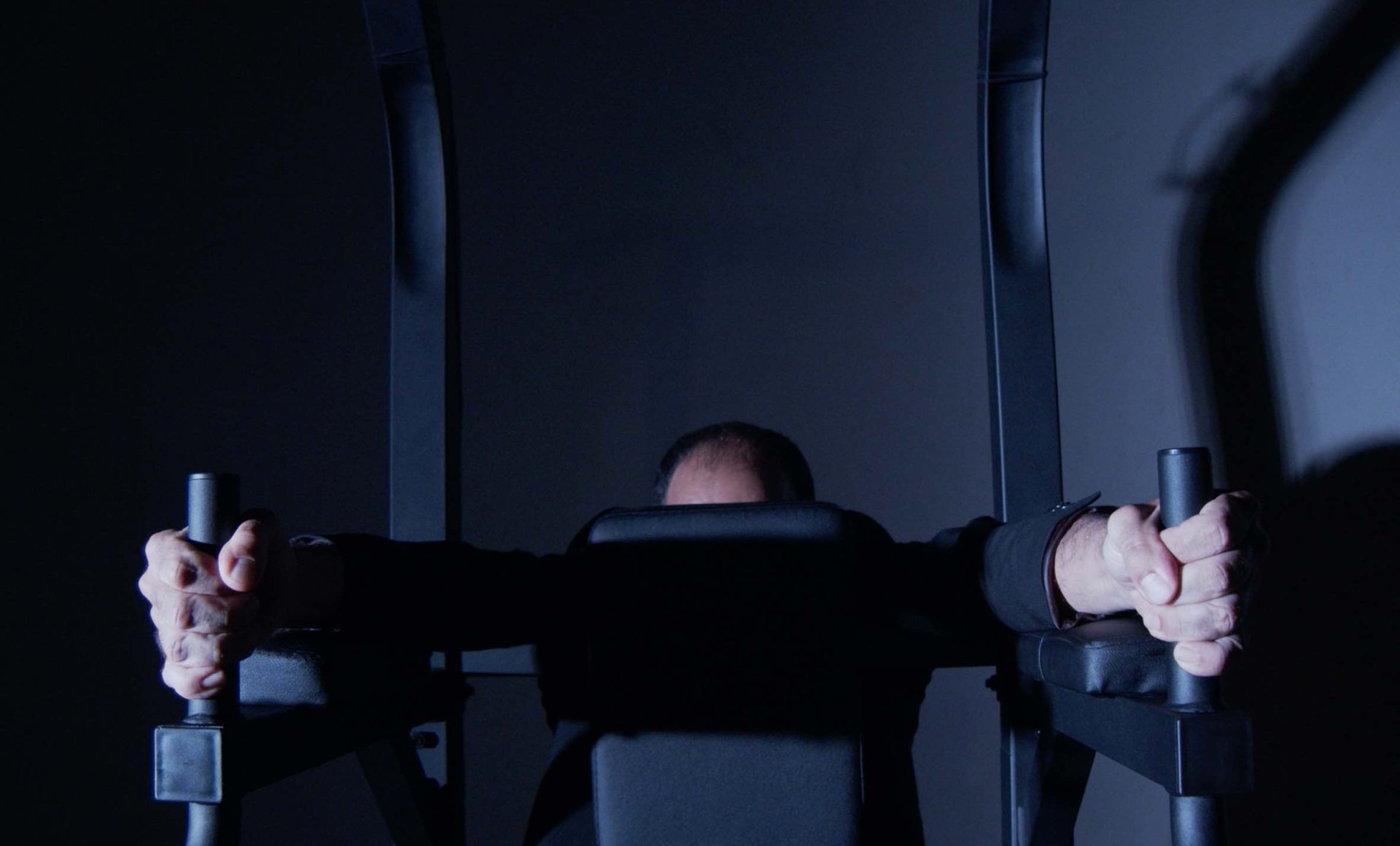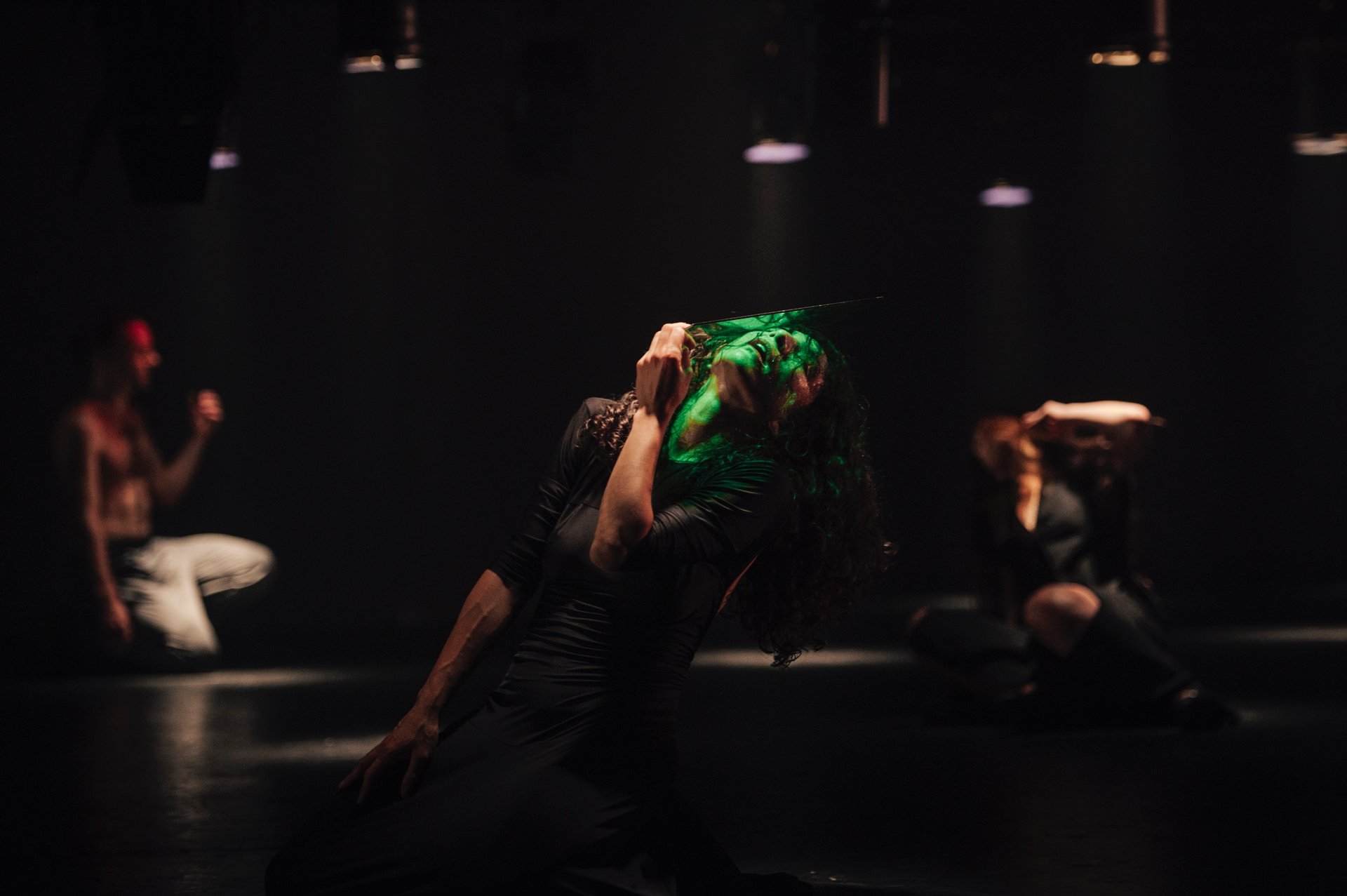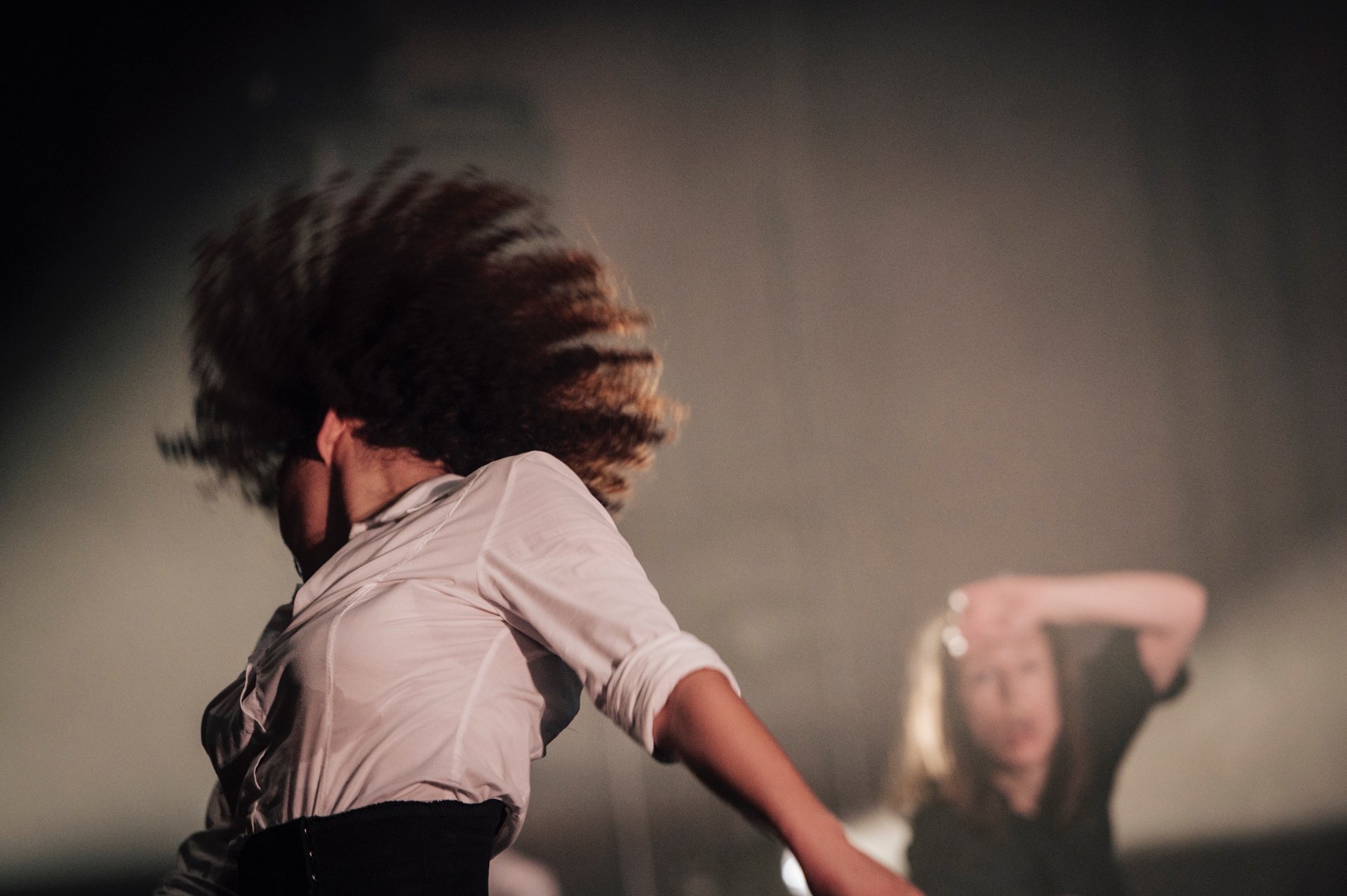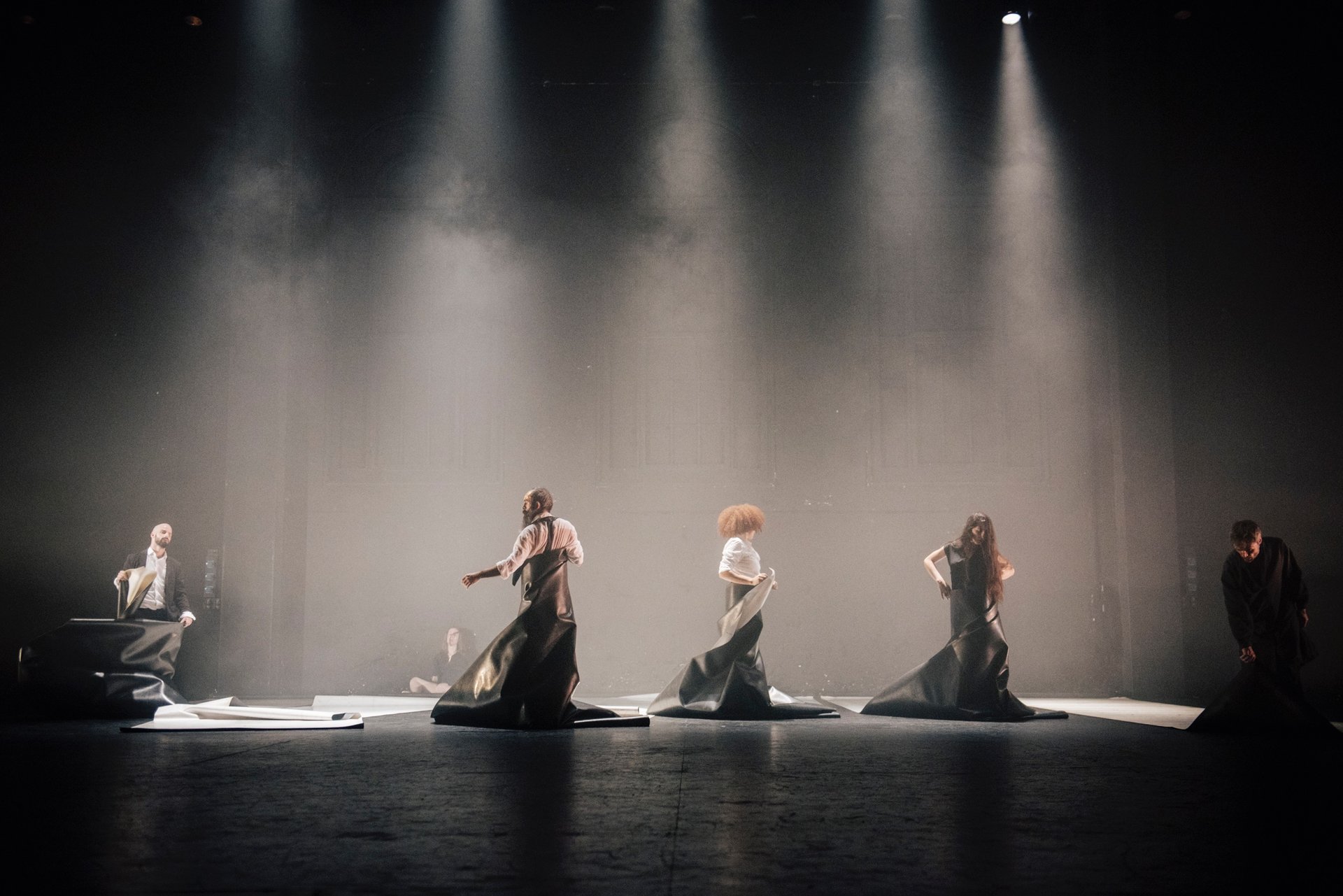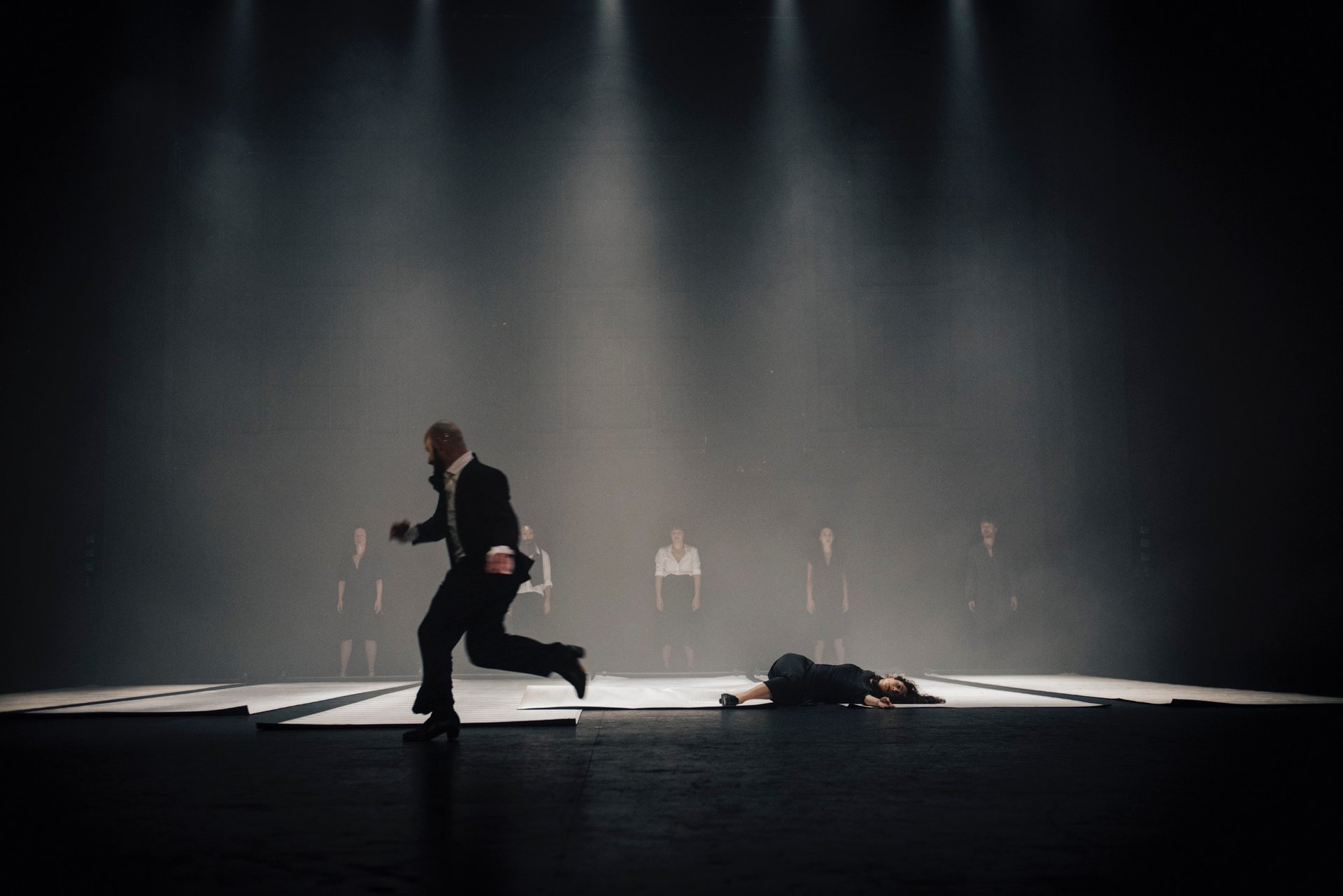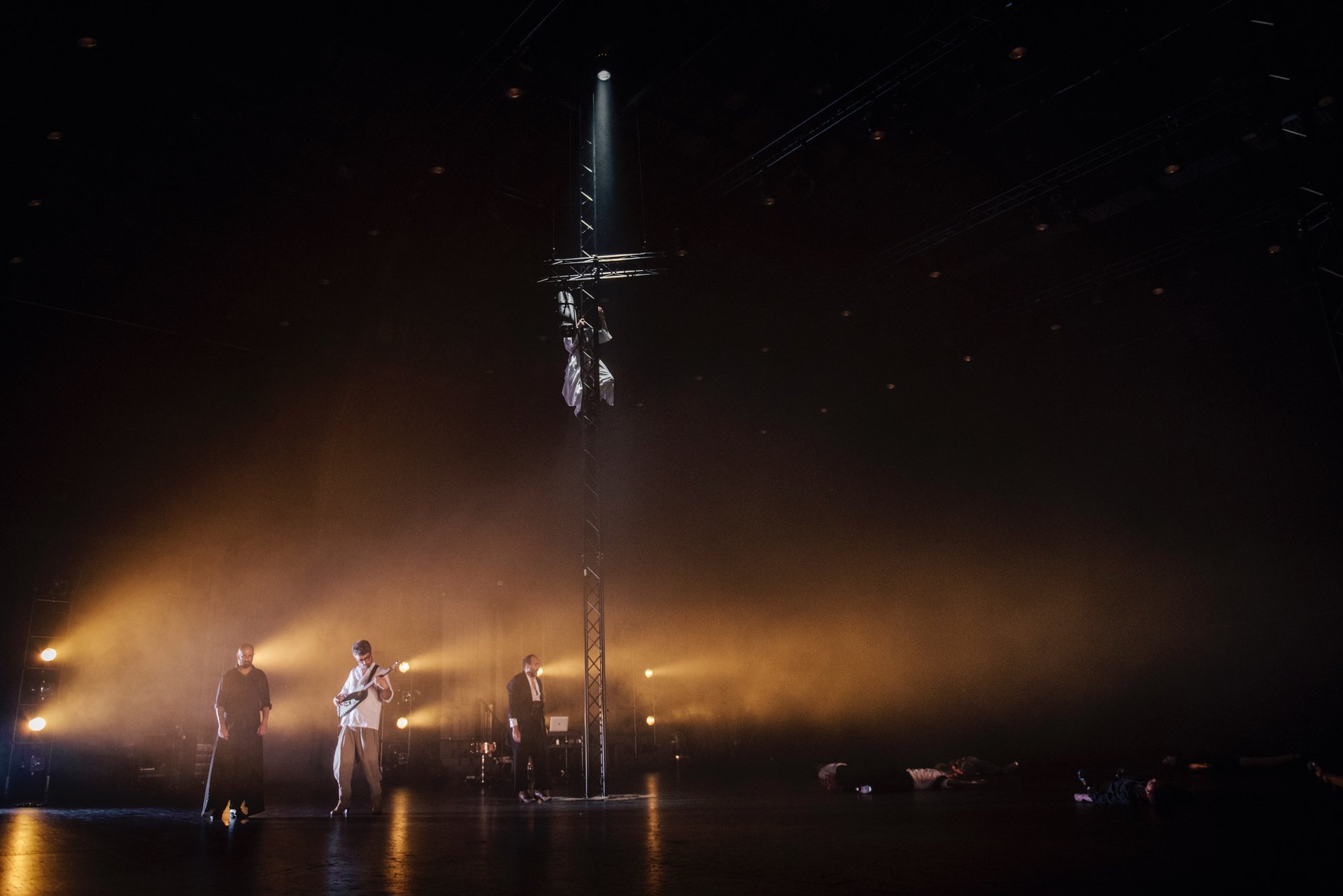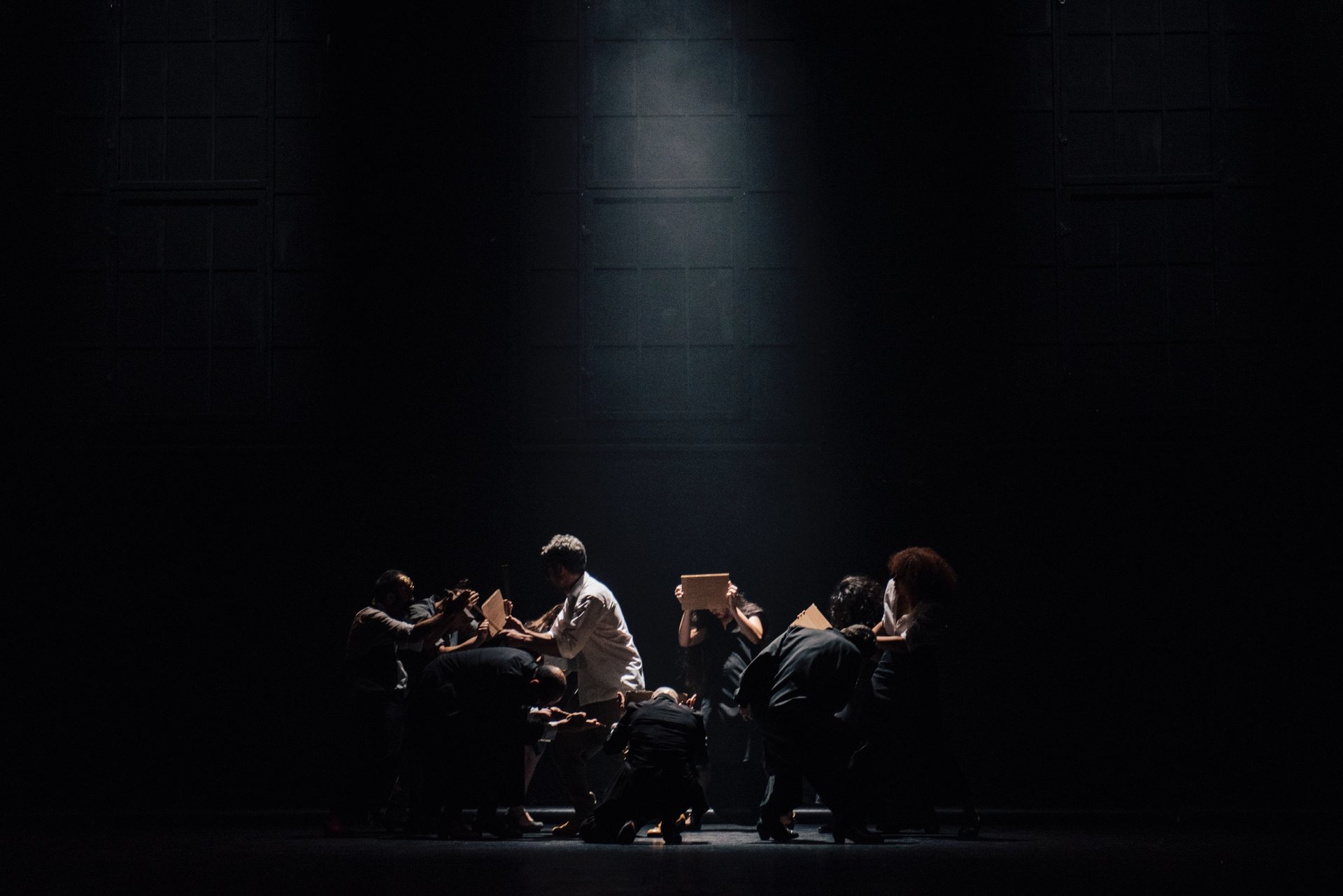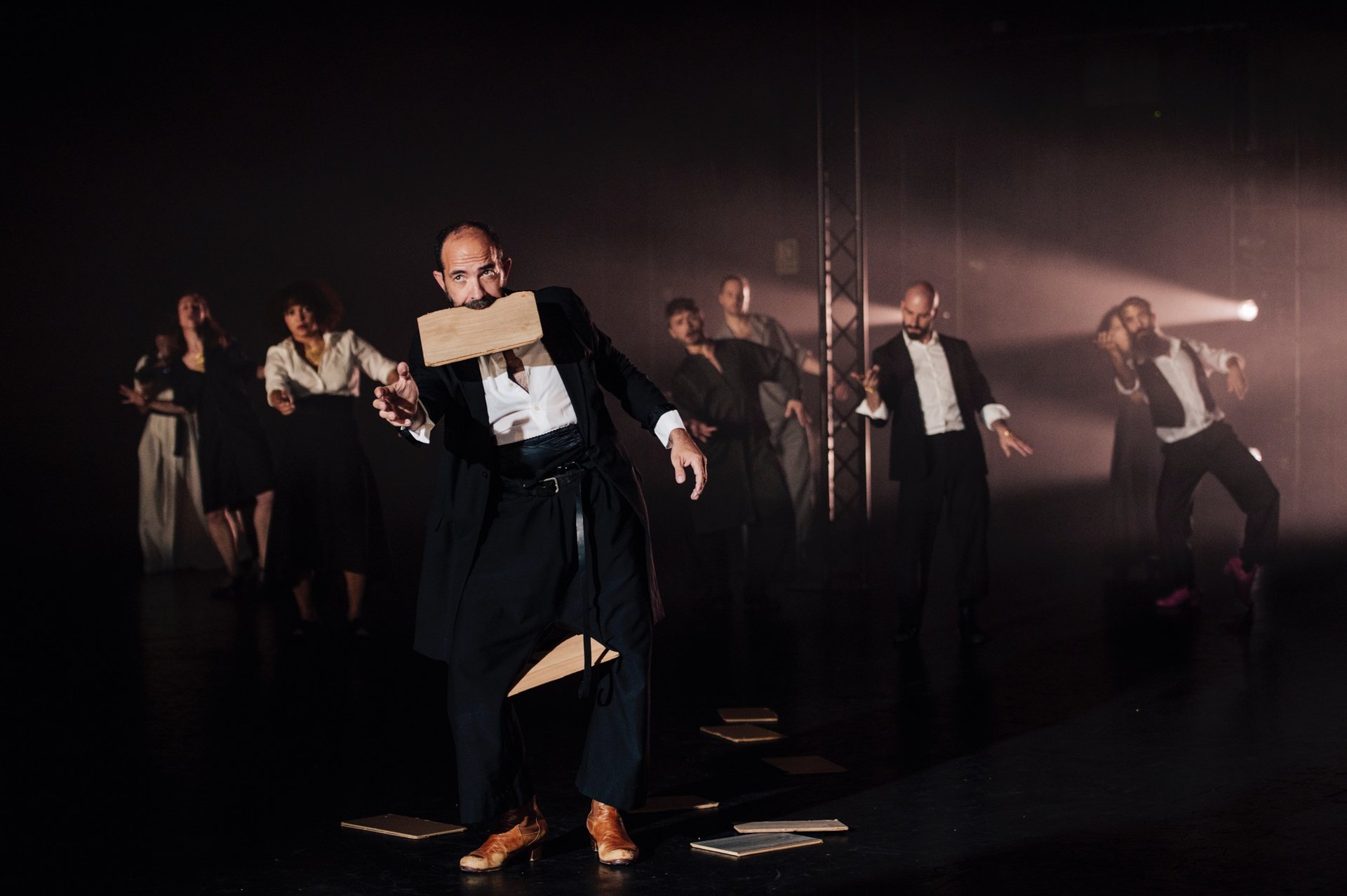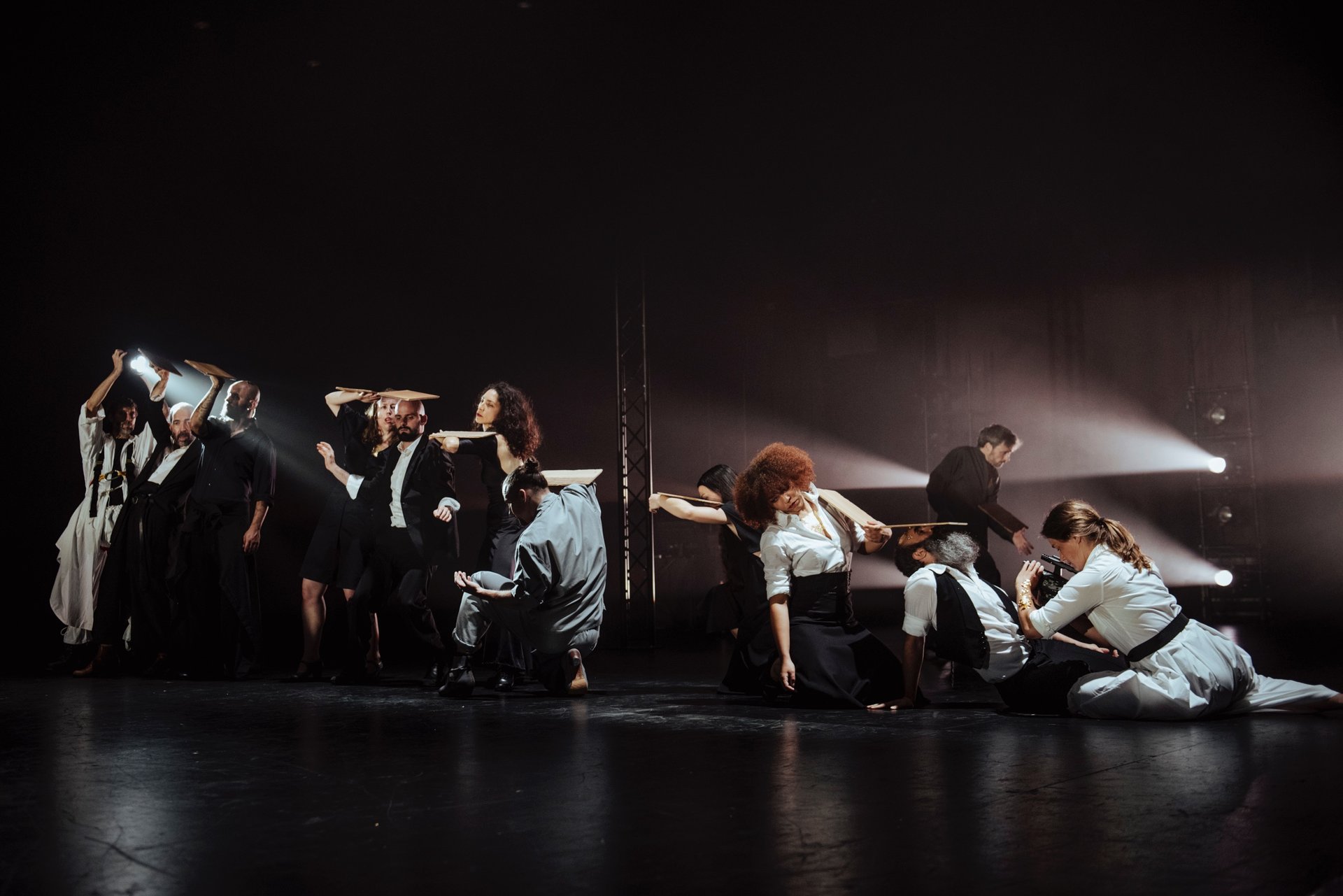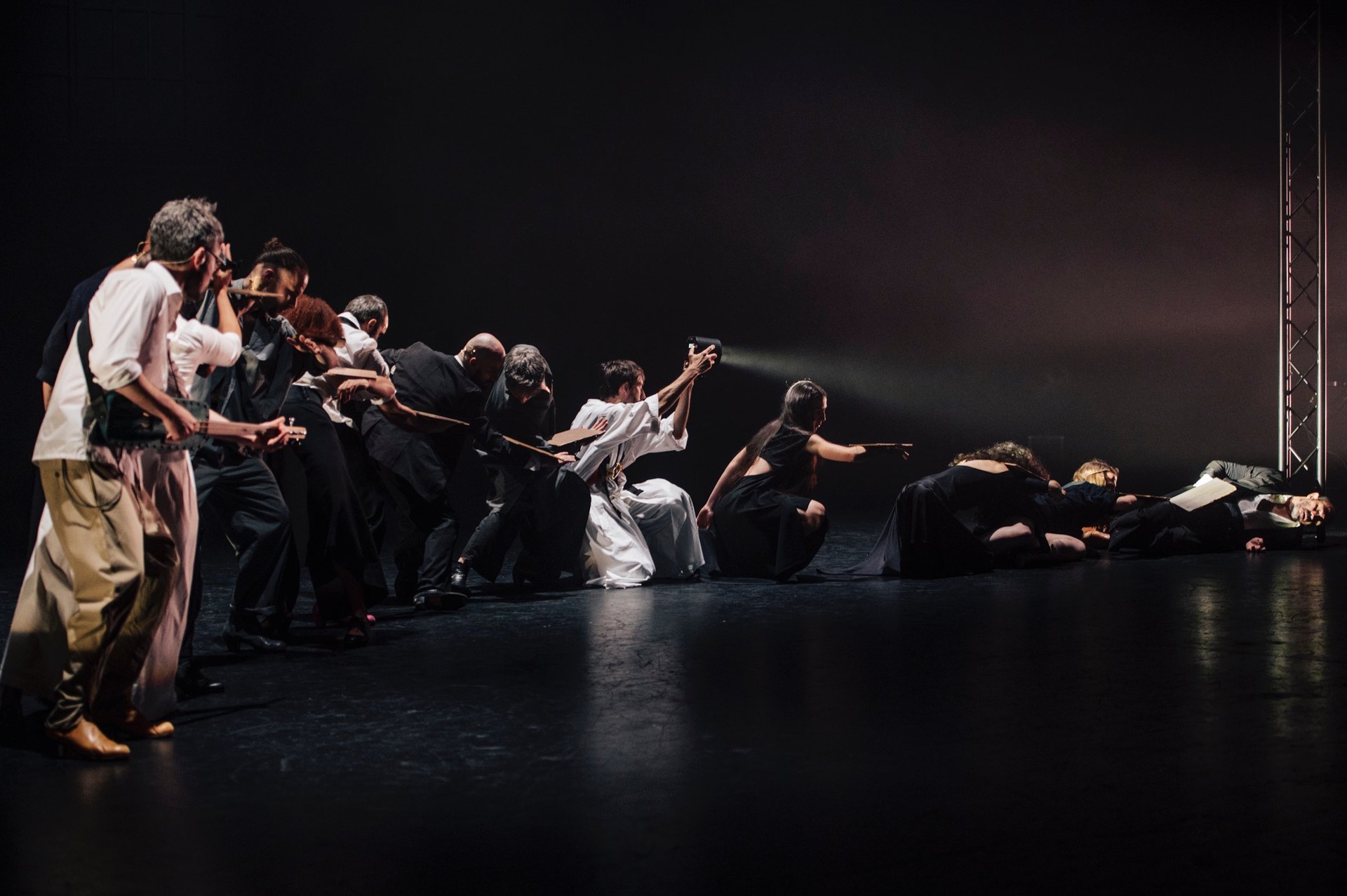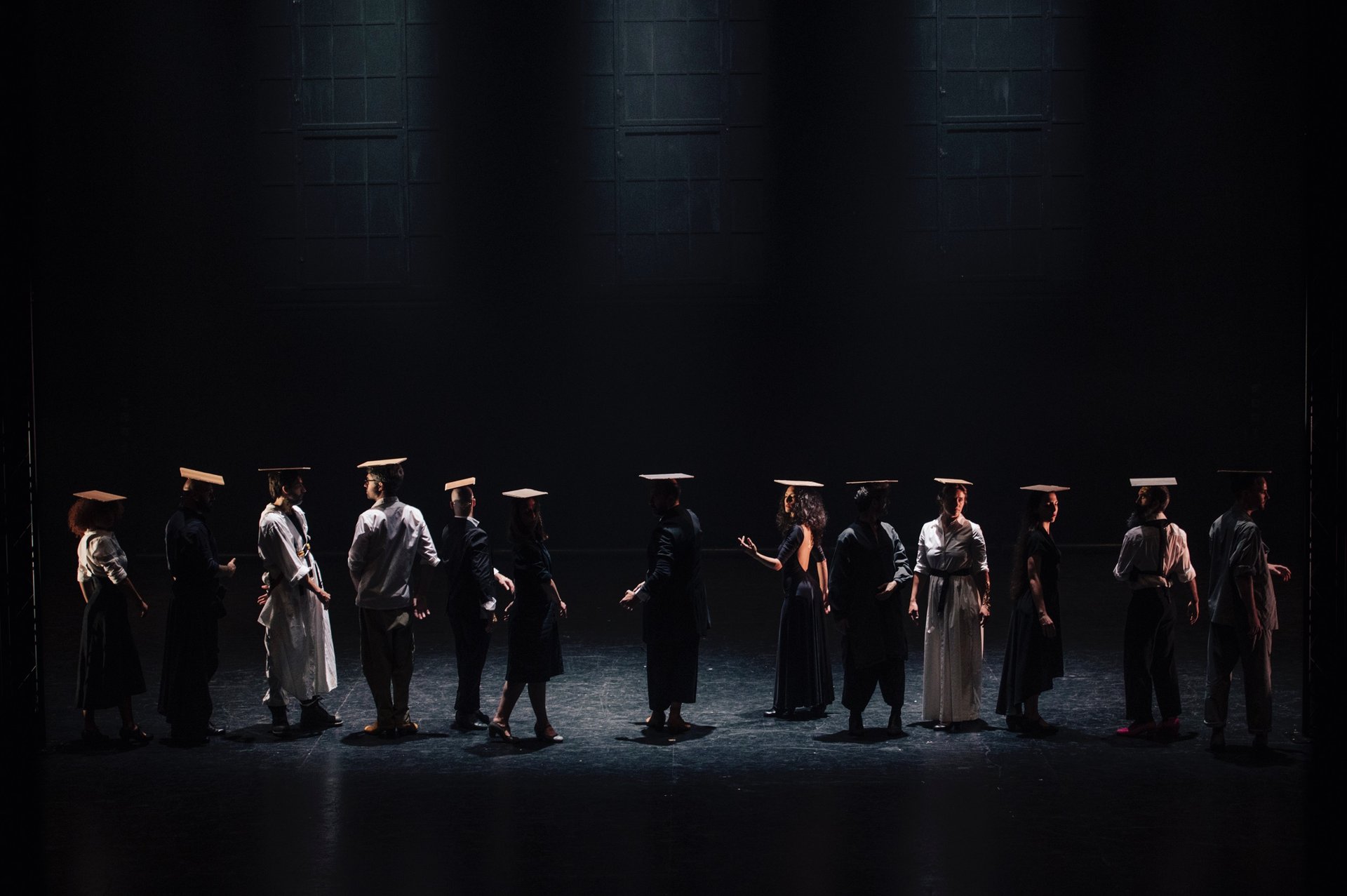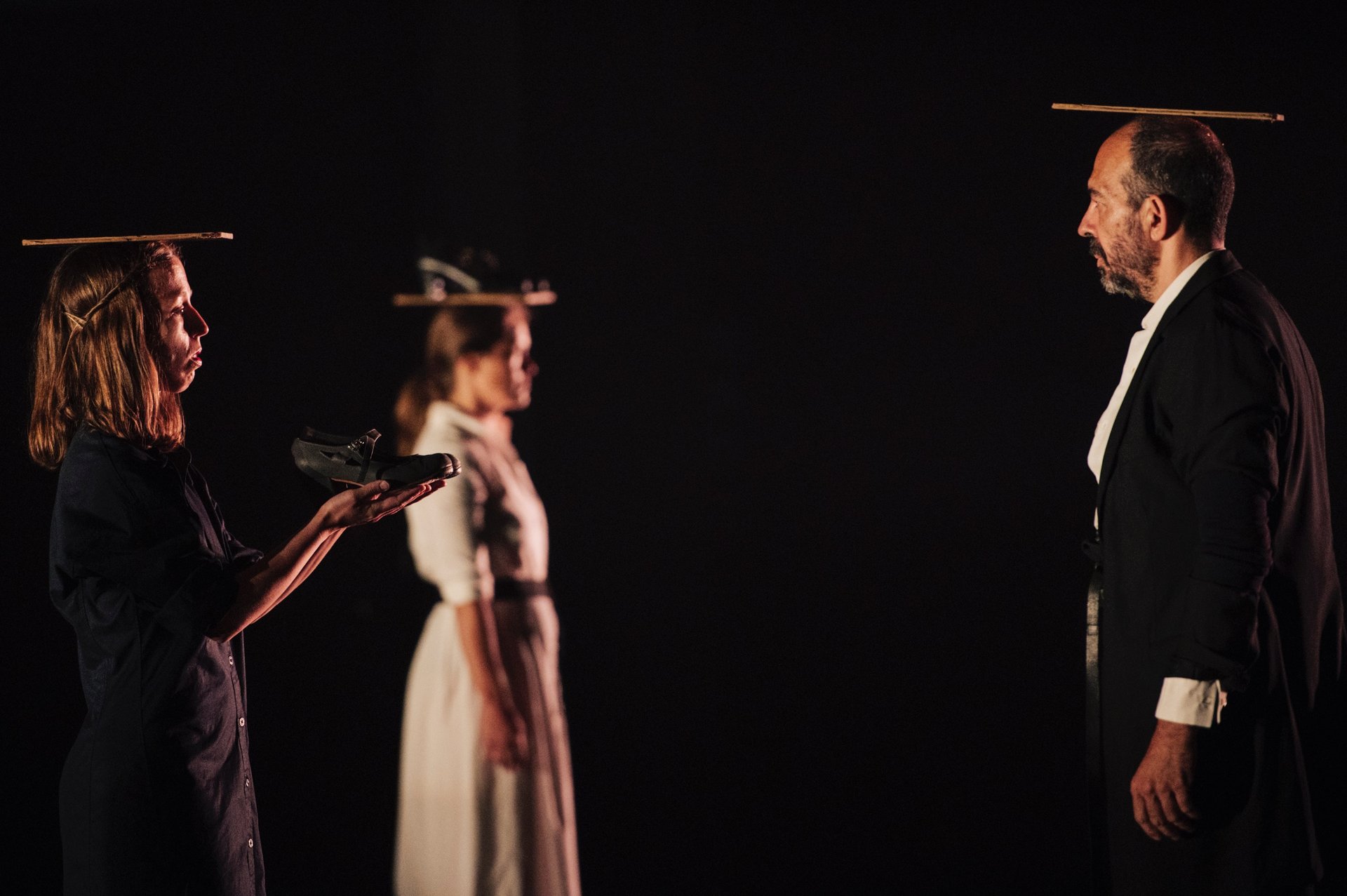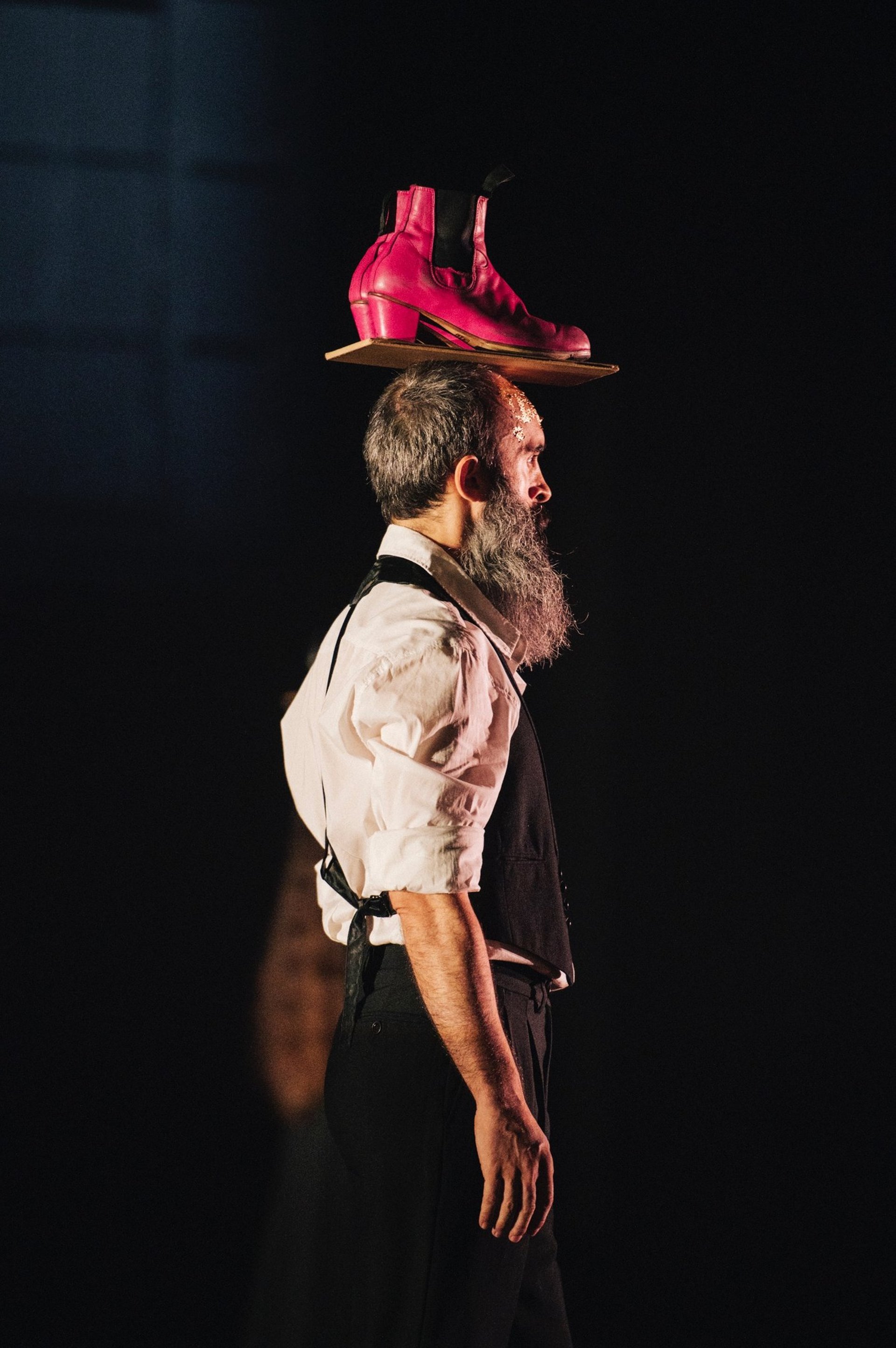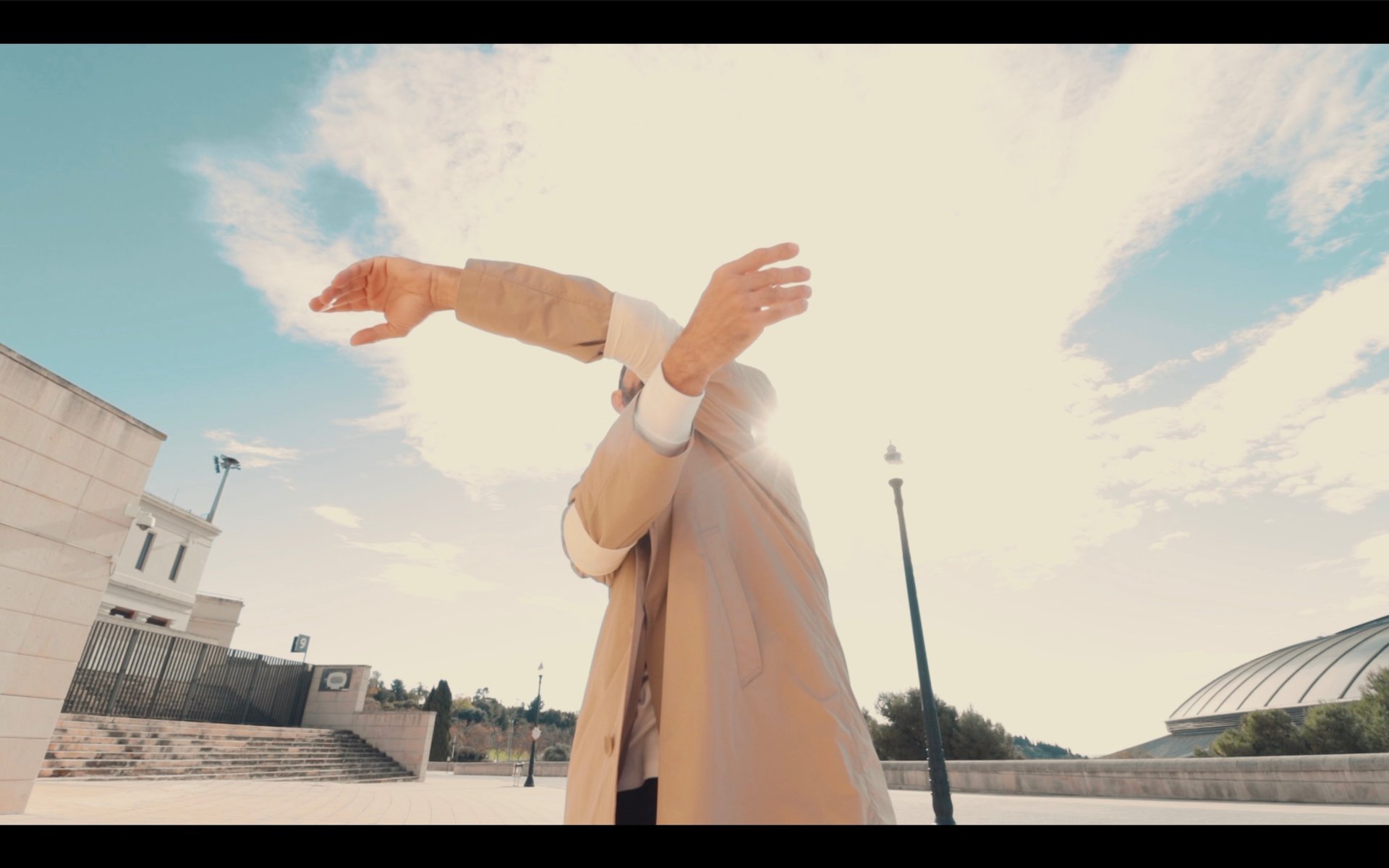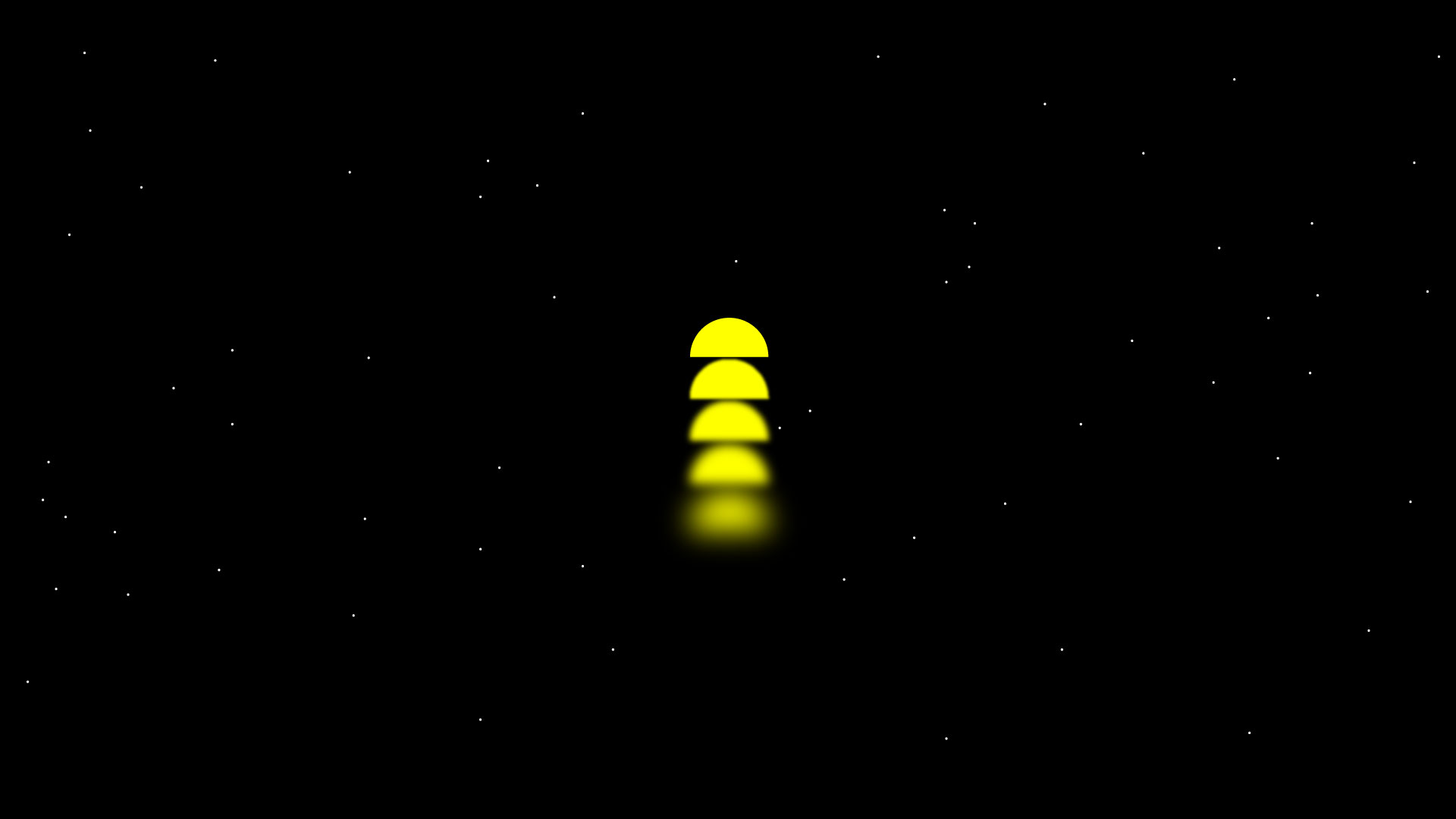
THE LITURGY OF THE HOURS
2018-2021
«The Liturgy of the Hours» is a process of research and creation that will be consolidated into an itinerant artistic event that lasts 12 hours, starting from the meeting with guilds, workers and groups.The event takes place in six paintings conceptually inspired by the number 12 and dramatically following the path of Jesus Christ, from the Last Supper to the Resurrection, extrapolating those references and symbols to flamenco through bodies and everyday spaces.»The Liturgy of the Hours» speaks to us of offices and resurrection, of mastery and emancipation, of bodies transcended through sacrifice, rituality, atonement, reflection and farewells.With this work, the choreographer proposes to cross the flamenco from the everyday, and in the everyday see his own spirituality and sacredness revealed.The audience is invited to live the different stages of this «Via Crucis» announced, through transformative experiences, both intimate and collective, which manifest the uniqueness of Juan Carlos Lérida’s proposal.The project integrates public and private places in the neighborhood surrounding the theater, such as an auto repair shop, a gym, a plaza.
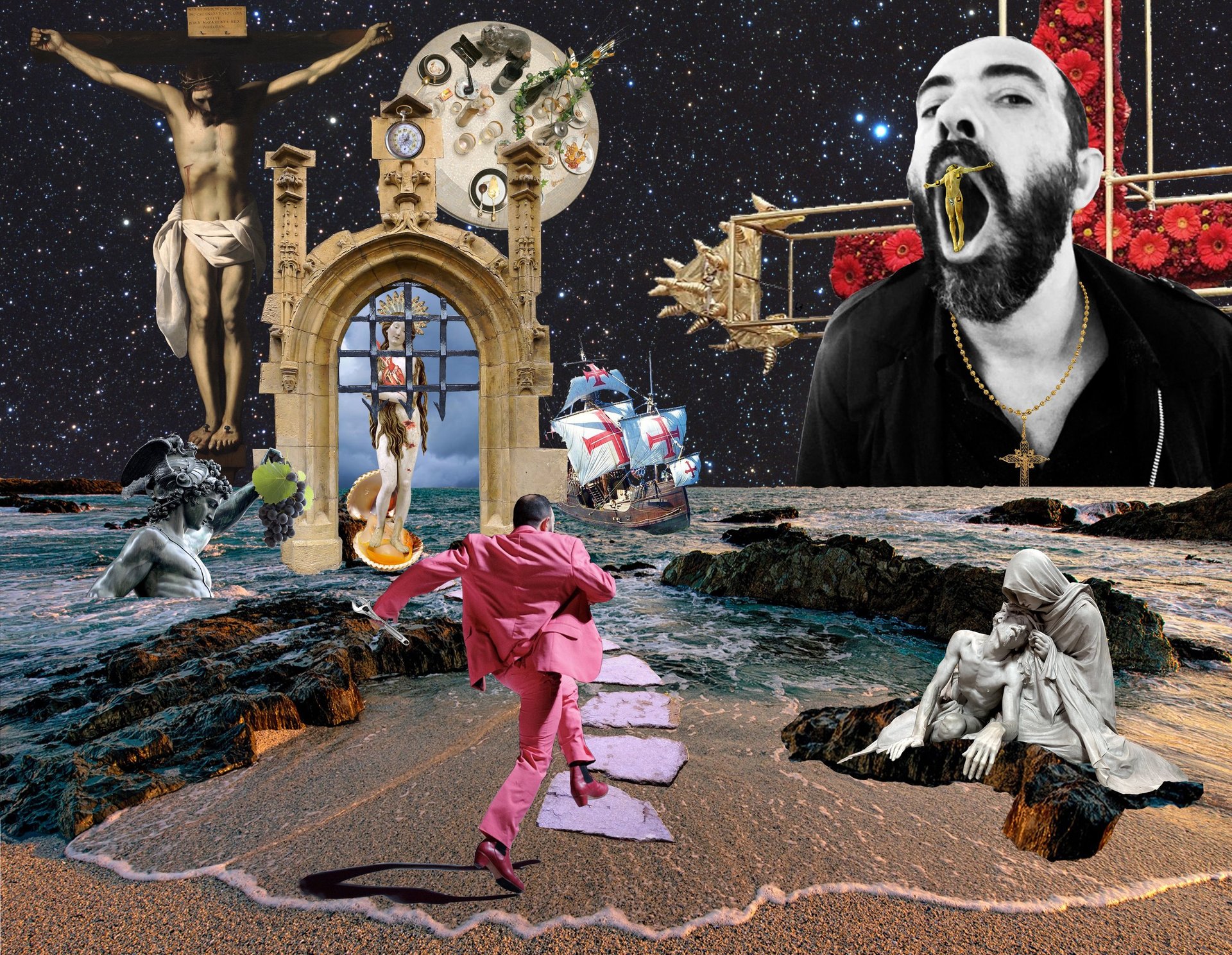
~ 1º TABLE ~
THE HOUR OF THE RITUAL
Community. Collective body.
Juan Carlos Lérida’s dance and Flamenco empírico merge in this piece with the daily gesture and ritual behaviours of the act of cooking. At this stage meeting point, Lérida meets Marina Monsonís, a transdisciplinary artist specialising in the culinary arts. All of them will let themselves be crossed by the temporality, the rhythms, the sounds, the smells and the physicality that this shared act entails. An ecumenical and ephemeral moment around a stage and a table. This piece is included in the creation process «The Liturgy of the Hours», an investigation inspired, as a starting point, by the symbology of number 12, and with a temporal dramaturgy inspired by the journey of Jesus Christ from the Last Supper to the Resurrection. «The Liturgy of the Hours» takes the form of an itinerant artistic act lasting 12 hours, beginning with a meeting with guilds, workers and collectives from a specific neighbourhood. The complete work will be premiered in the 20- 21 season.
Direction and choreography: Juan Carlos Lérida
Performers: Juan Carlos Lérida, Marina Monsonís
Executive production: Danilo Pioli (Dancebox.es)
Premiere: Barcelona 15 Jul 2019
Press and reviews:
https://terrassadigital.cat/flamenc-i-cuina-es-fusionen-a-la-hora-del-ritual/



~ 2º TABLE ~
THE MOUNT OF OLIVE TREES
Reflection and betrayal.
Juan Carlos Lérida proposes an artistic encounter in a format of danced conversation, as part of his research process on flamenco from everyday spaces and trades. In this project, the choreographer meets with theorists, journalists and other people with special interest and practice in the use of words and their meanings. These artistic quotations have the format of conversation-improvised, individual and unique. One in front of the other, based on a common theme. Each one, from his or her own language, allows the word and the gesture to pass through each other, opening up to new meanings of theories and dances.
Direction and choreography: Juan Carlos Lérida
with: Juan Carlos Lérida e invitado ( and guest)
Cante: Pirata
Dramaturgy: Sofia Asencio
Set design: Marc Lleida
Costume: Eugenia Gusmerini
Executive production: Danilo Pioli (Dancebox.es)
Pre-premiere: Barcelona 29 May 2019. Casa Elizalde with Oriol Puig Taulè
Premiere: Barcelona 29 Noviembre 2020. Teatre L’Artesà with Joan Marimon.
Reviews:



~ 3º TABLE ~
SACRED MACHINES
The hours of the relationship with the world.
In Sacred Machines, Juan Carlos Lérida investigates the encounter with guilds, workers and collectives that work manually. For this occasion Lérida has chosen a motor garage to discover their rhythm, their dynamics and check from flamenco and other languages how bodies and spaces are affected. «Until now I was in search of the ordinary in the bodies of flamenco. Today I look for flamenco in ordinary bodies», says Lérida.
Direction and Choreography: Juan Carlos Lérida
Interpretation: Juan Carlos Lérida, Jorge Mesa (El Pirata)
Light Designer: Marc Lleixa
Set Designer: Caja Negra TAM, Eugenia Gusmerini
Space: Talleres Ramon Pons ( Manresa)/ Parking Museo Nacional de Cataluña, MUHBA Oliva Artés, Taller Jordi Rocosa, patio de La Mutant (Valencia)
Executive production: Danilo Pioli (Dancebox.es).
Co-production: Fira Mediterránea Manresa/ Mercat de les Flors/ As. C. Flamenco Empírico
Premiere: Manresa (Barcelona) 5 Oct. 2018
Reviews:
Crítica Máquinas Sagradas: Recomana.cat
Crítica Máquinas Sagradas: Nuvol.com
Crítica Máquinas Sagradas: El punt avui
24/7 Valencia / Julia McGee-Russell
Selected by DANZA A ESCENA



~ 4º TABLE ~
THE TIME OF SLAUGHTER
Machine body.
The hours of sacrifice is a 12 minute micro performance, for only 12 spectators, which will be played for two hours in a row. The body and the dance become an instrument of purification, a torture machine, evoking sacrifice as a ceremony of atonement. A unique look at the links between flamenco, the ordinary and spiritual concepts.
Direction and Choreography: Juan Carlos Lérida
Interpretation: Juan Carlos Lérida
Light Designer: Marc Lleixa
Set Designer: Eugenia Gusmerini
Sound: Igor Pinto, AMbar Laparr
Physical assessment: Sandrine Rouet y Melissa Scioscia
Production: Danilo Pioli (Dancebox.es).
Co-production: Festival Sismograf (Olot)/ As. C. Flamenco Empírico
Collaboration: OSIC – Generalitat de Catalunya, Mercat de les Flors
Premiere: Festival Sismograf ( Olot) 3 Octubre 2020.
Press and reviews:

~ 5º TABLE ~
TWELVE
Meeting and transmission.
Doce (Twelve) is a creative process that forms part of the work The Liturgy of the Hours, a research work based on the symbology of number 12 and the conceptualization of the journey of Jesus Christ from the Lord’s Supper to the Resurrection. The work, which began in 2018 and will end in 2020, begins with meetings with different Professionals guild and will be formalised in a 12-hour itinerant piece. In DOCE (Twelve), the choreographer is surrounded by 12 artists and musicians in an encounter that evokes sacrifice as an expiation ceremony. Mercat de les Flors wants to accompany the artist in this unique project of research and creation.
Direction and Choreography Juan Carlos Lérida / Interpretation: Juan Carlos Lérida, François Ceccaldi, Jorge Mesa (El Pirata), Adrián Vega, Karen Mora, Vincent Colomes, Raul Lorenzo, Carmen Muñoz, Rosanna Terraciano, Oskar Luko, Andrea Antó, Valeria Stucki, Marc Lleixa / Light Designer Marc Lleixa / Music-Soundscape François Ceccaldi / Flamenco Singer El Pirata (Jorge Mesa) / Costume: Eugenia Gusmerini / Advising movemenen metodología Data Lipi Hernández / Production Danilo Pioli / VídeoValeria Stucki / Press: Olga Beca (Telegrama cultural)
Coproduction: Mercat de les Flors, Tanzhaus Nrw- Dusseldorf, Asociación Flamenco Empírico / Support: Graner fábrica de creación, OSIC – Generalitat de Catalunya, Laboratorio de investigación desde el Flamenco IT / Thanks: Roberto Romei, Ignacio Castelli, Jordi Collet, Salvador S. Sánchez, Meritxell Martí Calvo
Premiere: Barcelona. 27 Sep 2019.
Reviews
Telegrama Cultural. (El particular Via Crucis de Juan Carlos Lérida»
La Vanguardia: “Yo llevo puesto el filtro del flamenco en mi mirada sobre la vida”
El Punt Avui: «Viacrucis Flamenco»
Ara Cat: «Una crucifixió com a transformació i elevación»
La Vanguardia: El «hereje del flamenco» Juan Carlos Lérida se inspira en Jesucristo.


~ 6º TABLE ~
THE HOUR OF THE FAREWELL
Solitary body.
Transubstantiation (the body online)
A dance film based on the passion of Christ
Text: Bárbara Raubert.
The plot of the film, authored by Juan Carlos Lérida (JCL from now on) with Andrés Pino, goes far beyond the actions carried out; it is the final part of an ambitious research project to find flamenco in everyday life and which led the choreographer to traverse various trades until culminating in ritual and, from there, to sacredness, the immaterial, and finally, the network. It would be like the movement of running until losing balance and stumbling, so that the steps end in a scratched bulería, to then recover verticality in a new space-time. Thus, JCL passes through Feníxia, Silvia Gubern’s galactic triumphal arch on the passeig de les cascades.
Although JCL practices empirical flamenco, that is, flamenco of experience, evidence, and sensory perception, in this work there is no certainty other than the multiplicity of visions, and all the marks and milestones — like signposts, sewer irons, and water channels — are nothing more than accessories to extend the lines of the body itself and to dialogue with rhythms of different sonorities, but they are not the path; the research lies in another dimension (where the plot is found).
Speaking of rhythms: we learn that doors and vital organs share a double movement — expansion and contraction — although the breathing of a door does not follow the necessary precision of heart and lungs. The constancy of some and the freedom of the other merge into a flamenco enriched by speeds and timbres that are heard, fill, and empty each other. We advance, with the dancer, between forces of attraction and repulsion. Between heaven and earth. In fact, during a stretch of his particular pilgrimage, JCL carries an old wooden door, a direct entrance to paradise. Or hell, which he seems to touch (what if hell were the shadow cast by the same sun that reigns in paradise?). Duality, also in JCL’s aspect (what if he were not playing a character?). With the face of an incorruptible explorer, he enters the shadowy forest of Montjuic cruising, to encounter hungry specters, like him; but it is not in the glow of flesh where he finds nourishment, but in the dark hole and in the rough narrowness (what if he carried the light inside him? What if his eyes were black holes that suck matter?).
The look to the camera is challenging, serious. He throws a glance that is like a stroke of the arm: first with the corner of the eye, now up, now falling down in an arc and suddenly piercing the camera. We feel the pinch of his pupils crossing the screen until he retreats and transforms into an inner vision, inscrutable concentration. From the Bacchic expression to the bovine gaze, a blink responds to a glow and we lose focus. Like when he shakes his head and the flesh of cheeks and forehead breaks down, the figure dissolves and becomes light; light that comes from within him (yes, it was inside!). The whole body, light.
In another scene, the head lags behind the body that holds it and clings to what is now behind and soon will be past. We wonder the reason for this impossible extension — the body rides the head — and mystery appears like a very fine glass dome surrounding everything. He runs again until losing balance and, stumbling, the steps end up becoming a scratched bulería to recover the vertical axis and cross a new space-time. Tom Carr’s Needle in the sculpture garden pierces the sky and holds the dome.
Below, another dome, the one painted by Miquel Barceló in the Mercat de les Flors with a centrifugal spiral, begins to spin; even deeper inside, the heavy, dark, and damp dome of the Foixarda supports some climbers with ropes who hang and spin like angels of annunciation; and in the watchtower of the Montjuic castle, like a shroud, the solitude is of stone but has good resonance. A type of angelic witchcraft gives coherence to the passage from one scene to another and inside each one, as if Tarkovsky had studied Kylie Minogue’s music videos. Approaching and receding, in a wide and steady swinging, the camera dances and the image multiplies into false kaleidoscopes of divergent actions united by a vertex, high-angle and low-angle shots share the same instant and reveal the aerial capacity of JCL’s choreography. We see the soul leave its body in the form of a flying jacket but return to merge into a dance of transubstantiation. Like when we are pushed until losing balance and, stumbling, the steps become a scratched bulería to recover the vertical axis. In short, a fall rescued by enchanted images that lead us, together, into a new space-time.
Idea, choreography and interpretation: Juan Carlos Lérida
Dramaturgy: Juan Carlos Lérida, Andrés Pino.
Production, editing and video editing: Andrés Pino.
Music: François Ceccaldi
Costume: Eugenia Gusmerini
Assistants: Irene León, Karen Mora.
Coproduction: Mercat de les flors, Asociación Flamenco Empírico
PRESS AND REVIEWS:
La vanguardia. «Juan Carlos Lérida baila 12 horas de «via cruces» flamenco itinerante.
El periodico «12 horas de peregrinación flamenca por Montjuic»
El pais » La pasión de cristo convertida en 12 horas de flamenco»
Teatron» Bienaventuradas las malas hierbas..»
Nuvols. com » Un Via Crucis en clau flamenca»
ccma.cat El mercat de les flors…..
El punt avui. «Anima flamenca»
SusyQ. Doce Horas de liturgia flamenca
Mercat de les flors. Uno al doce o como el cuerpo creador se va alejando de la escena

Ayuda en gira del INAEM Ministerio de Cultura de España.
Recomendado por red española de teatros.
Espectáculo relevante en el año 2021 por Susy Q. Revista de danza.
